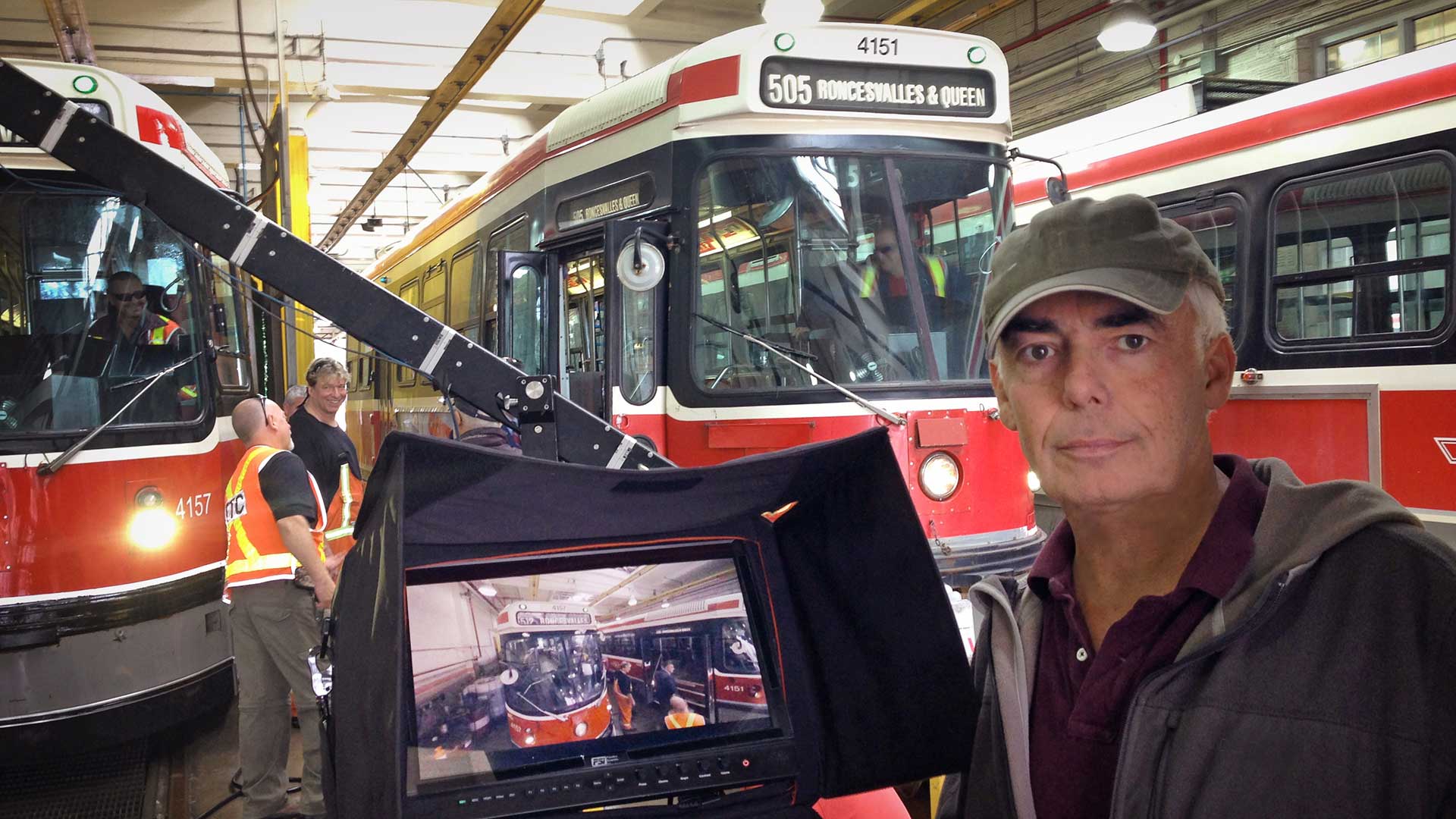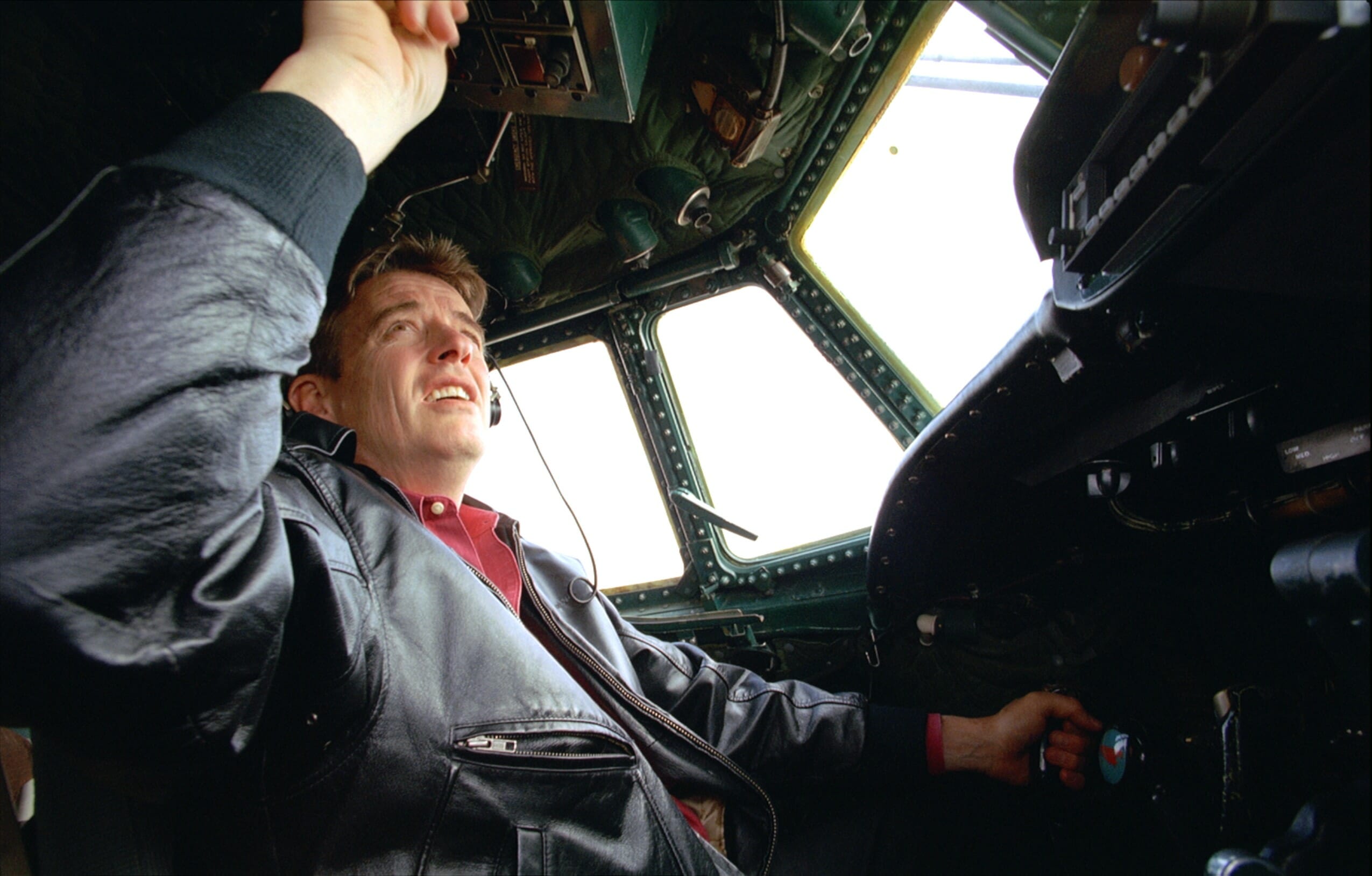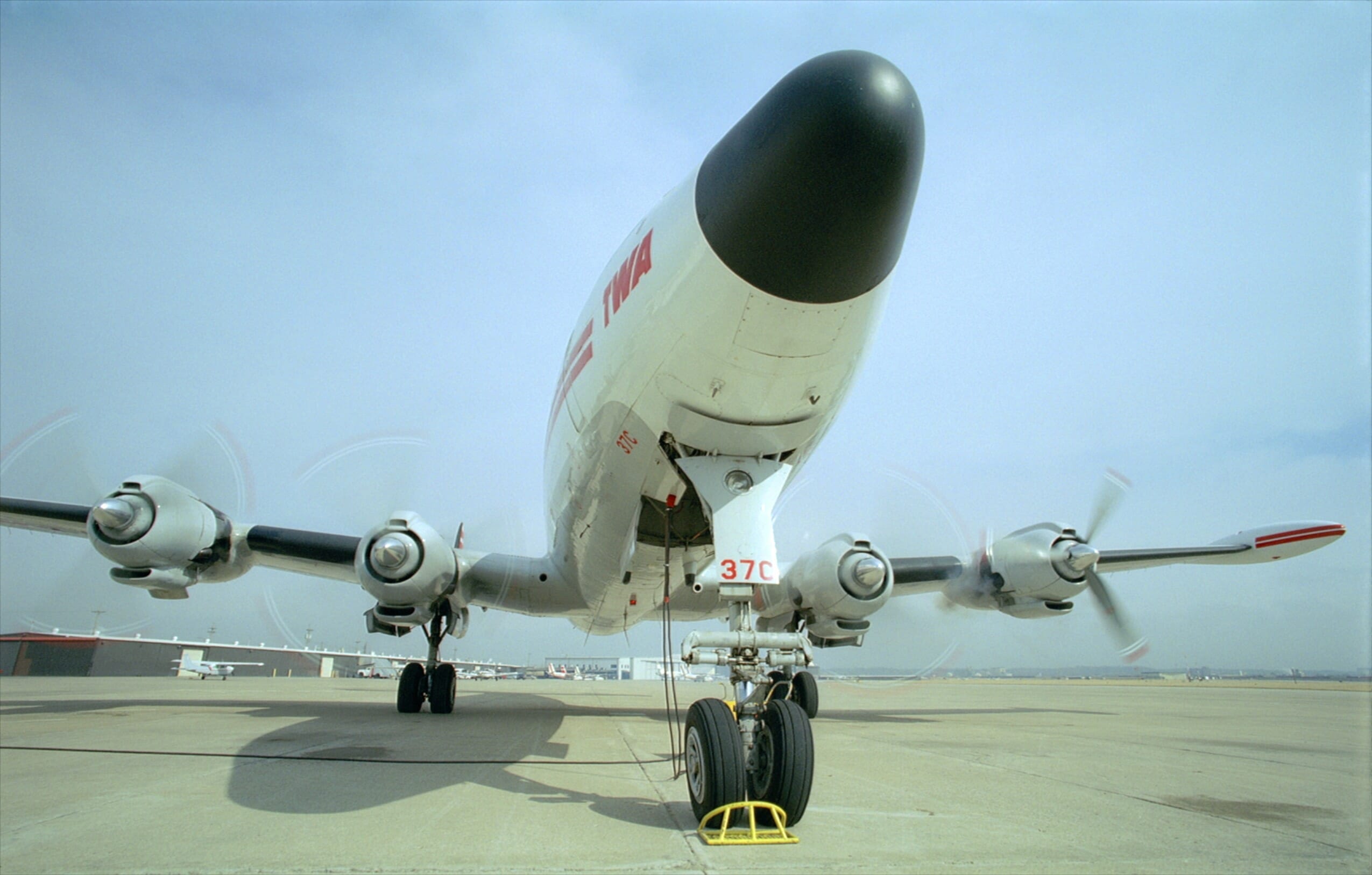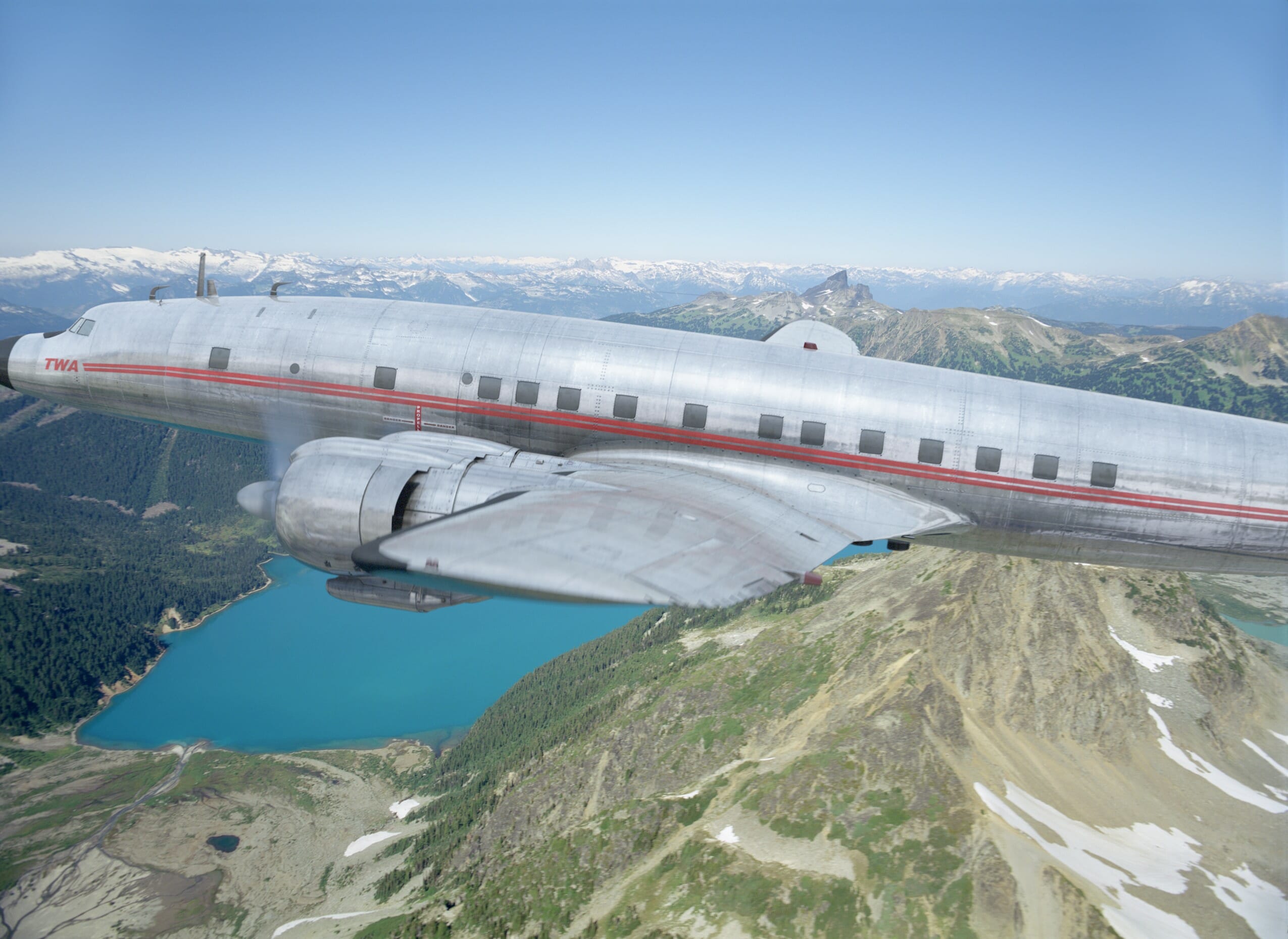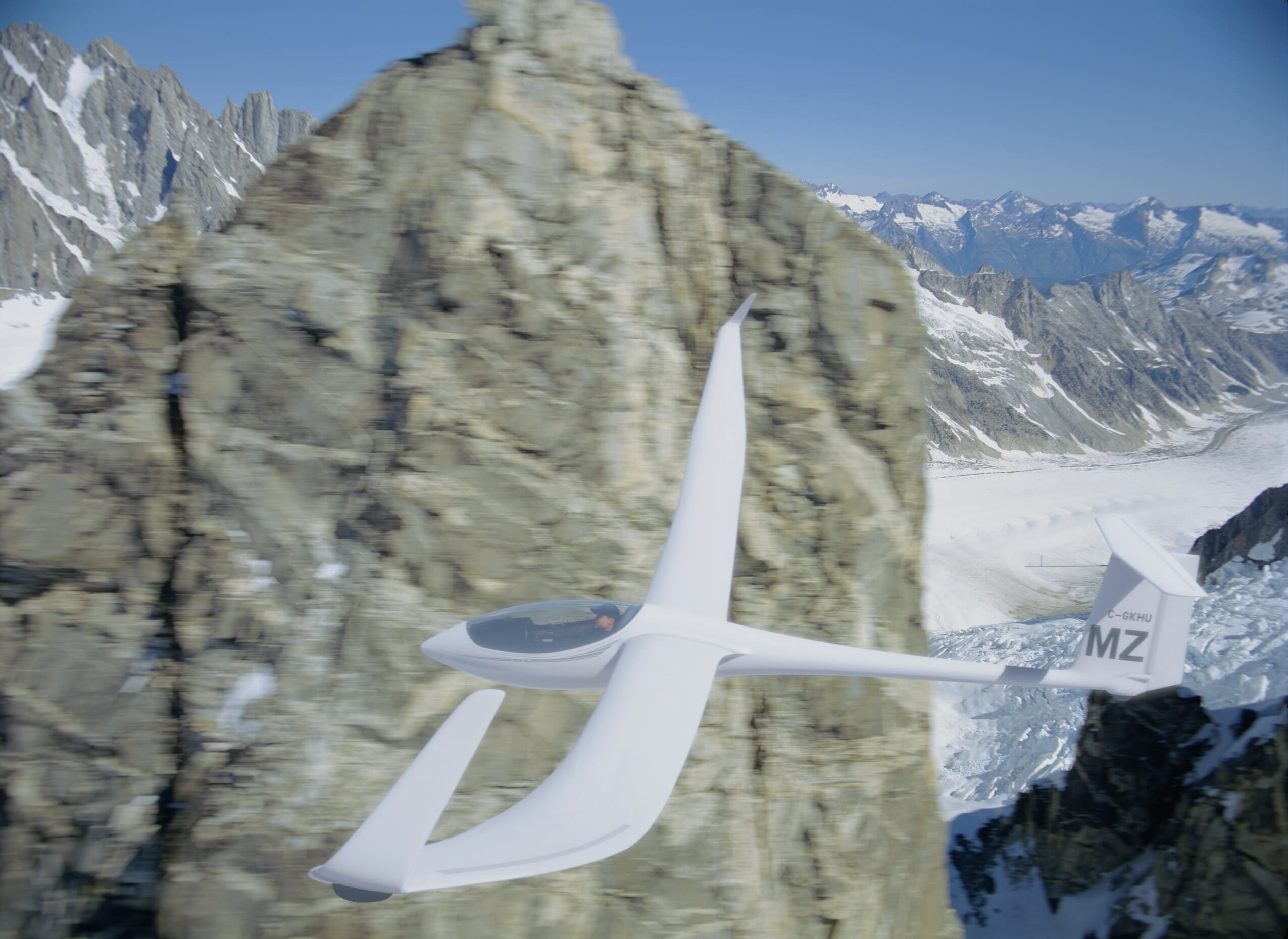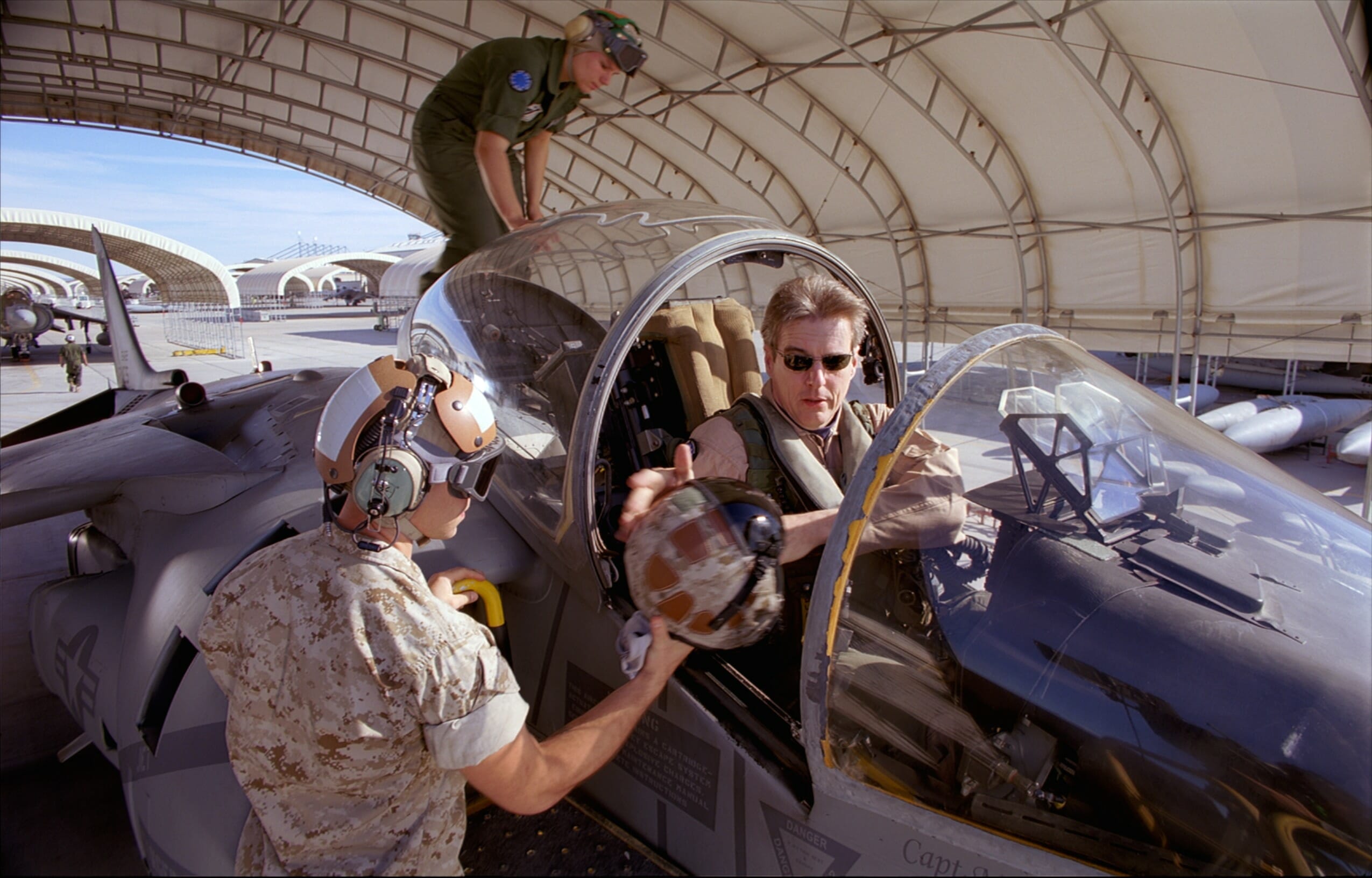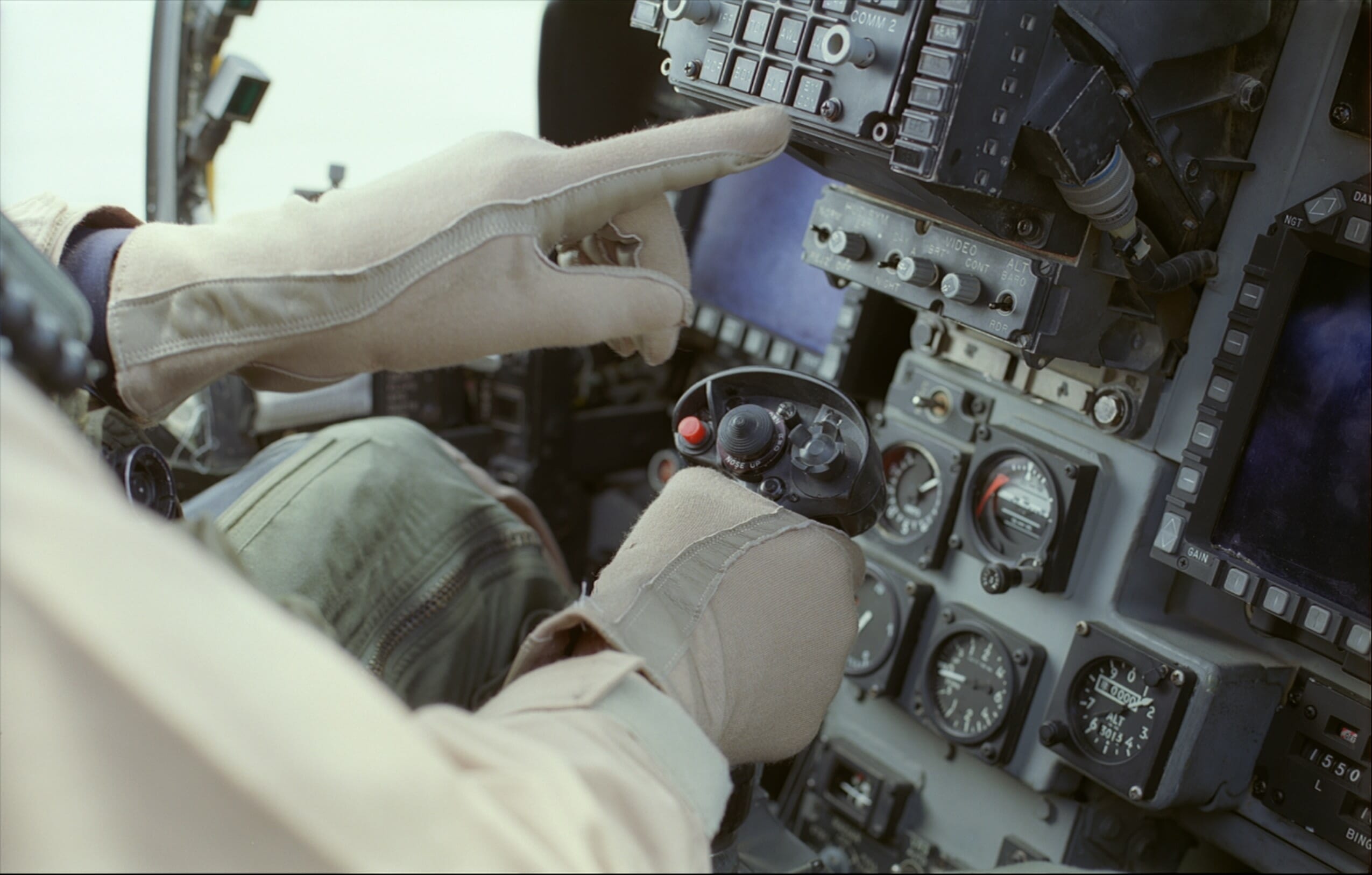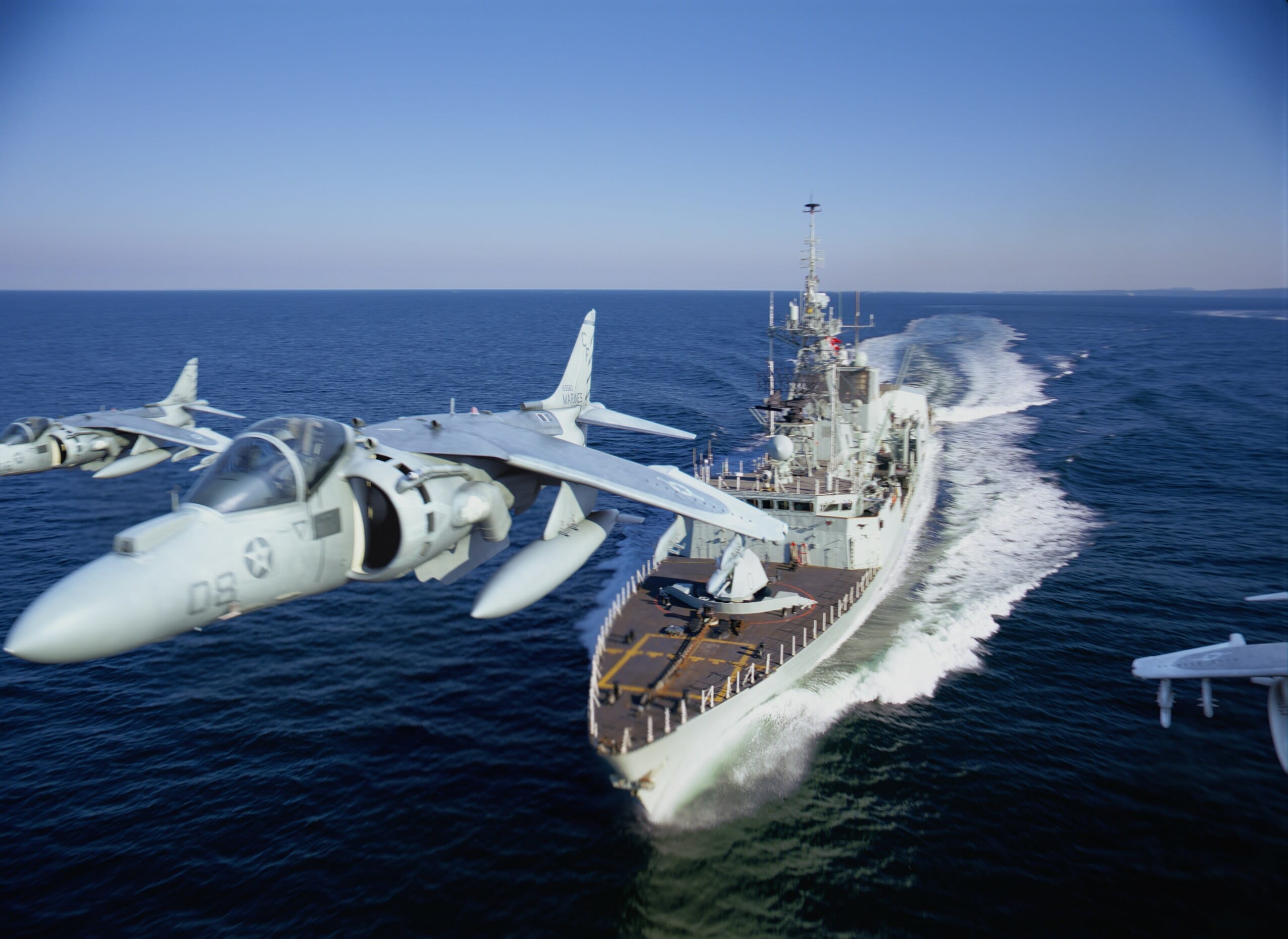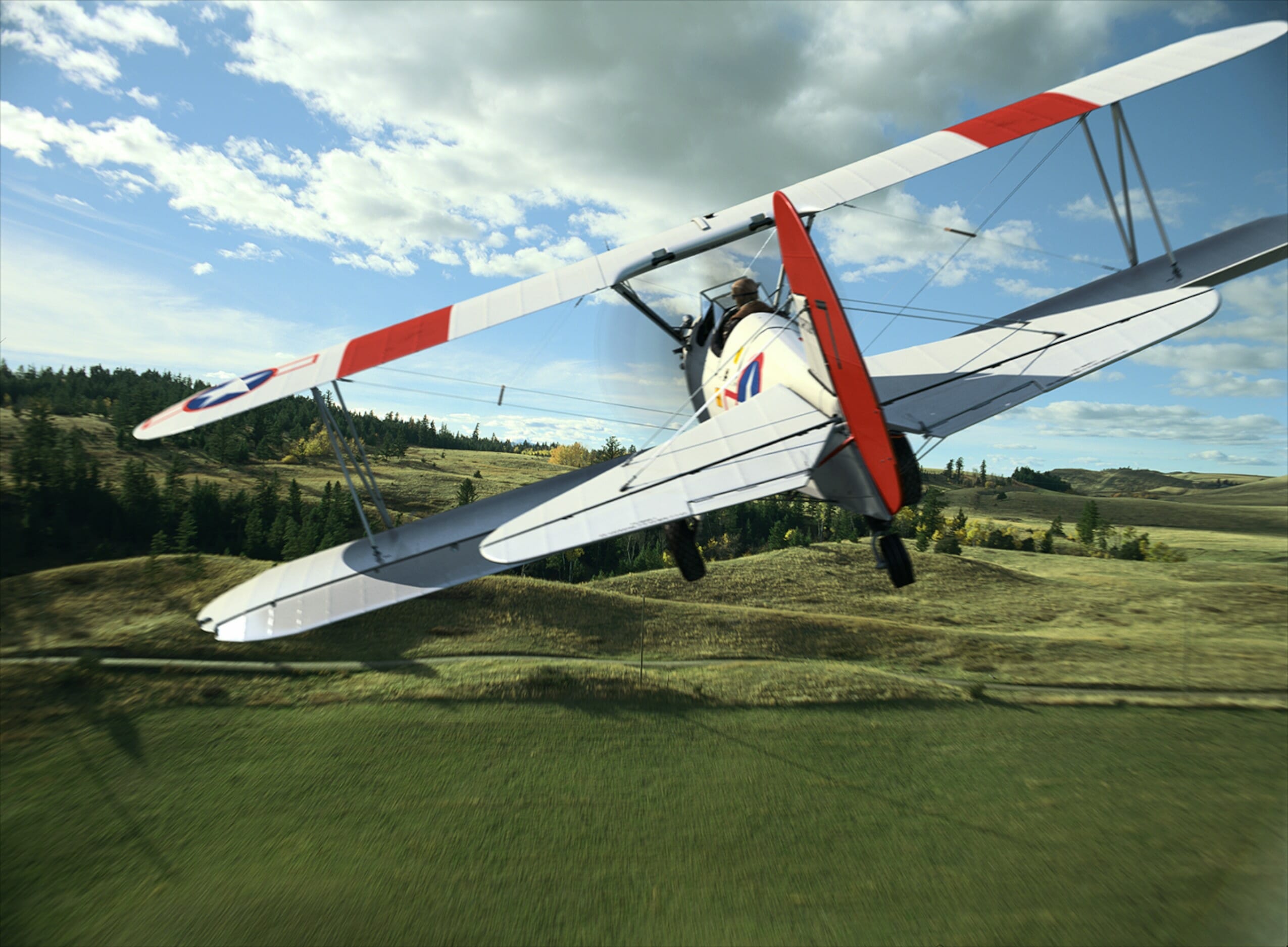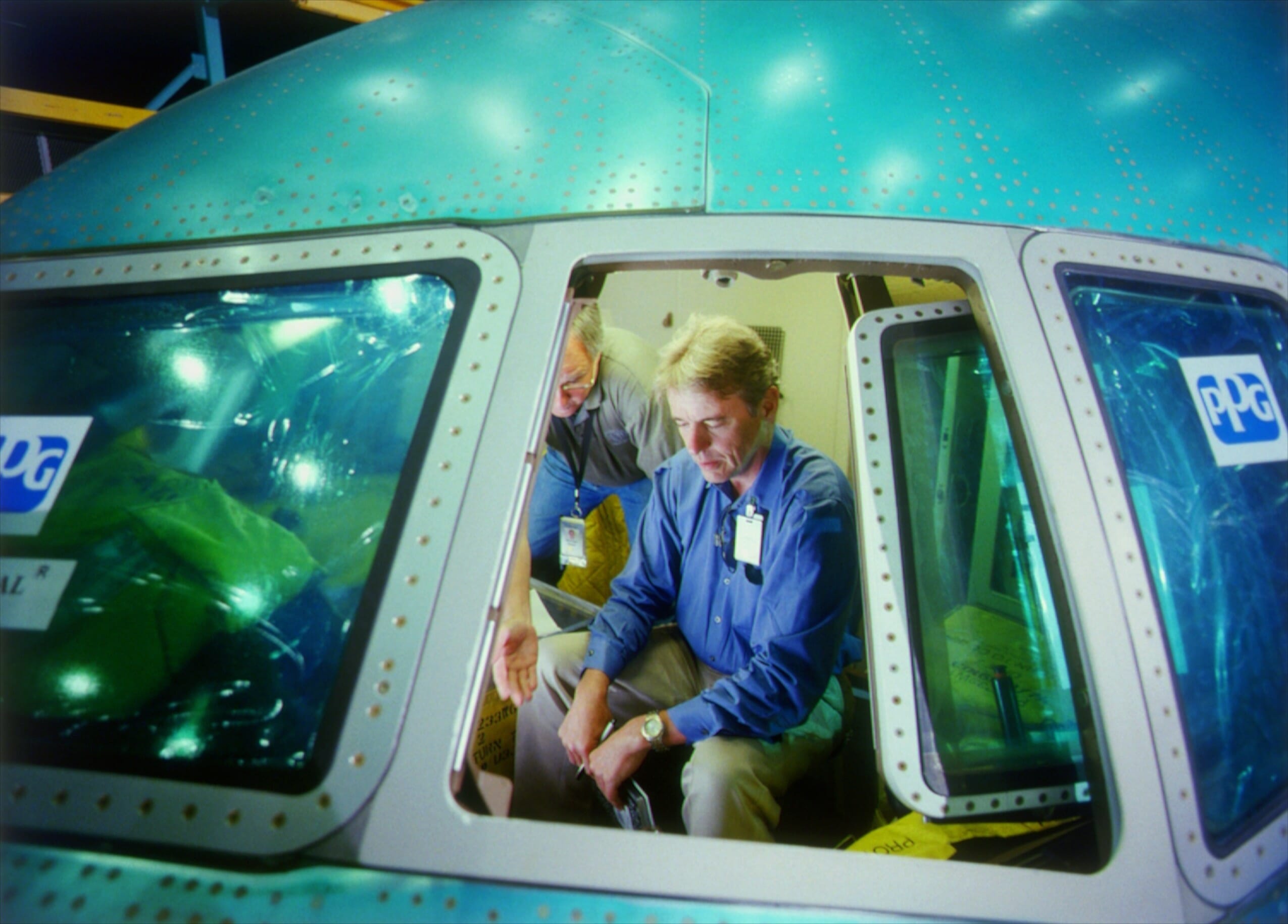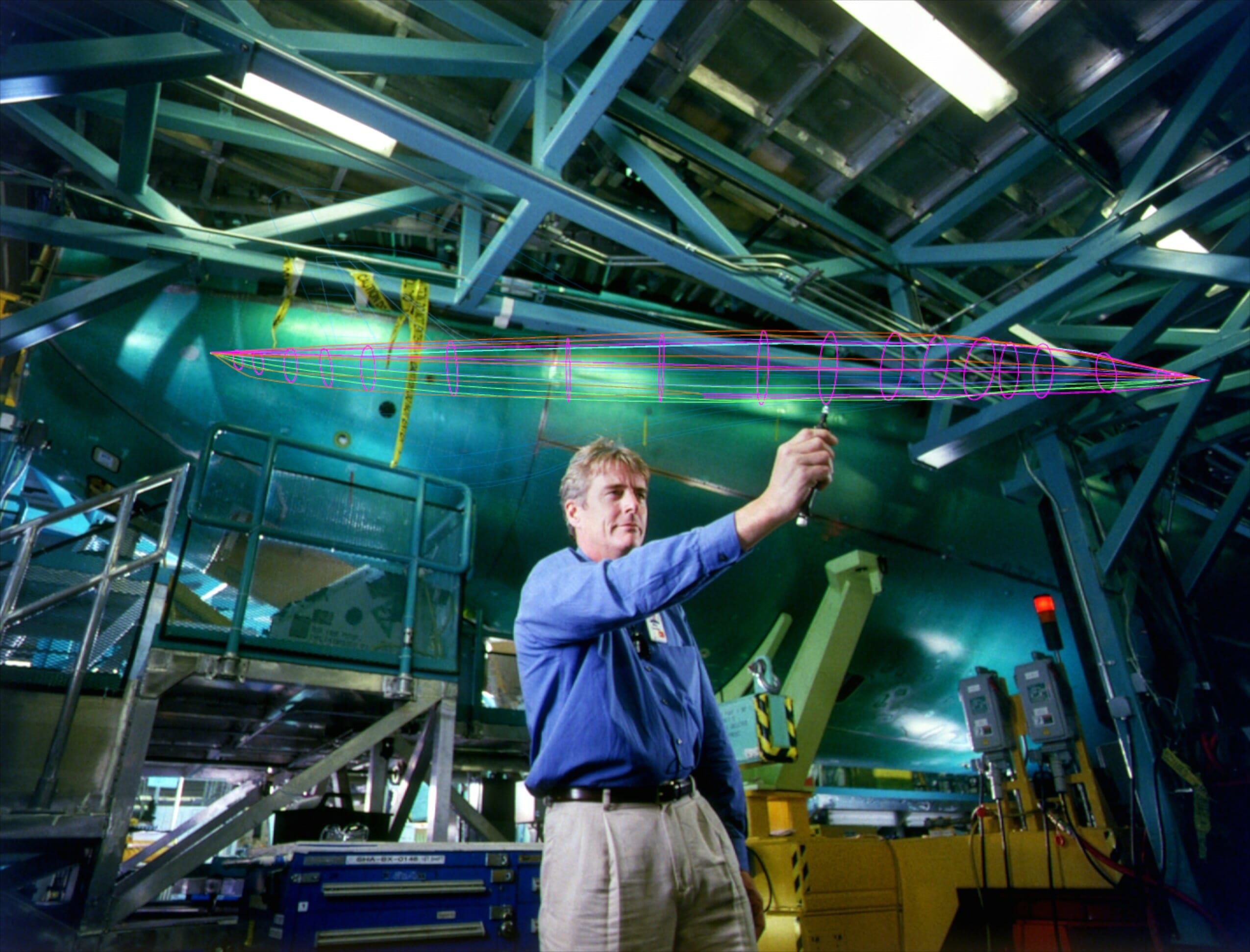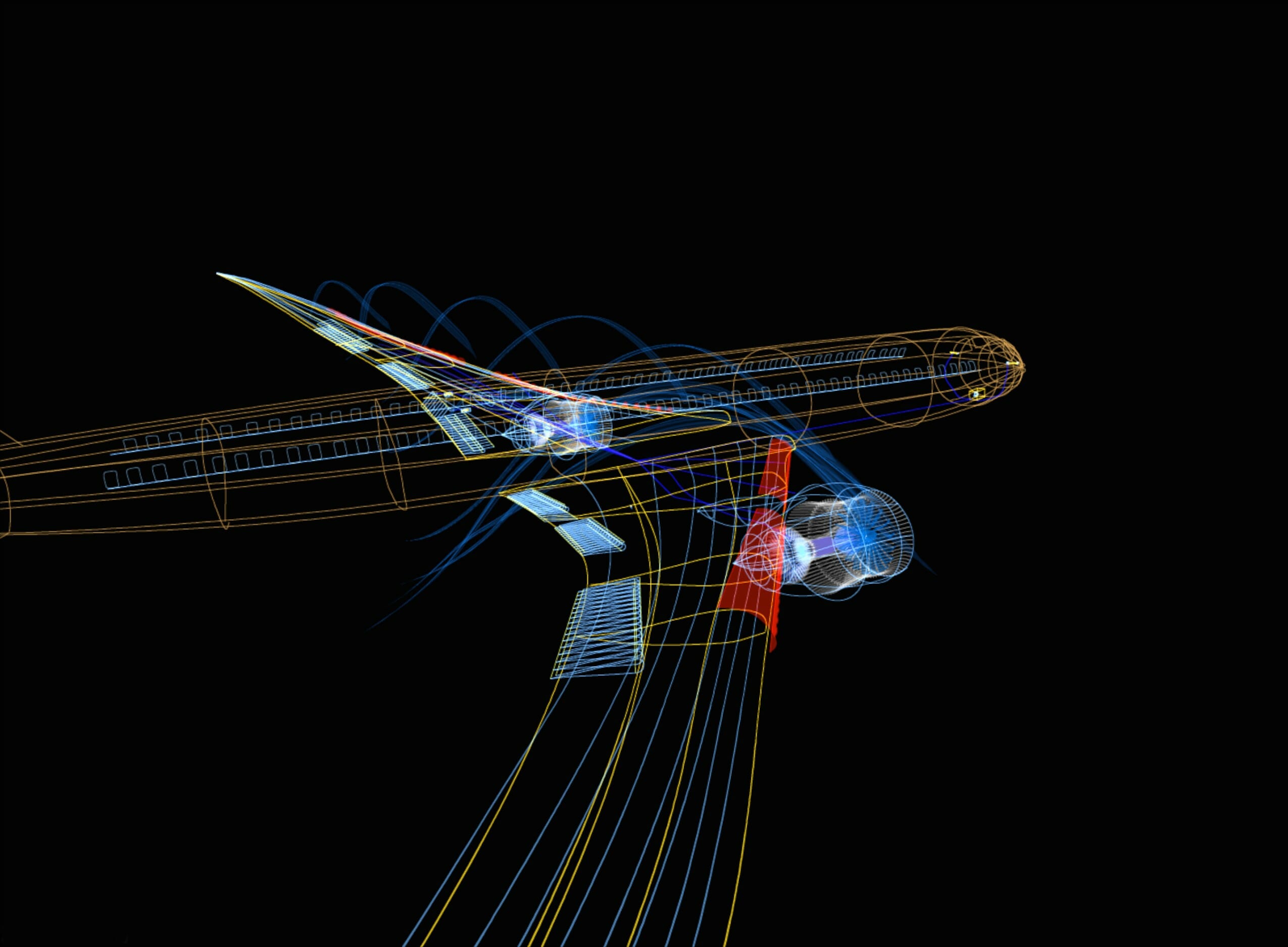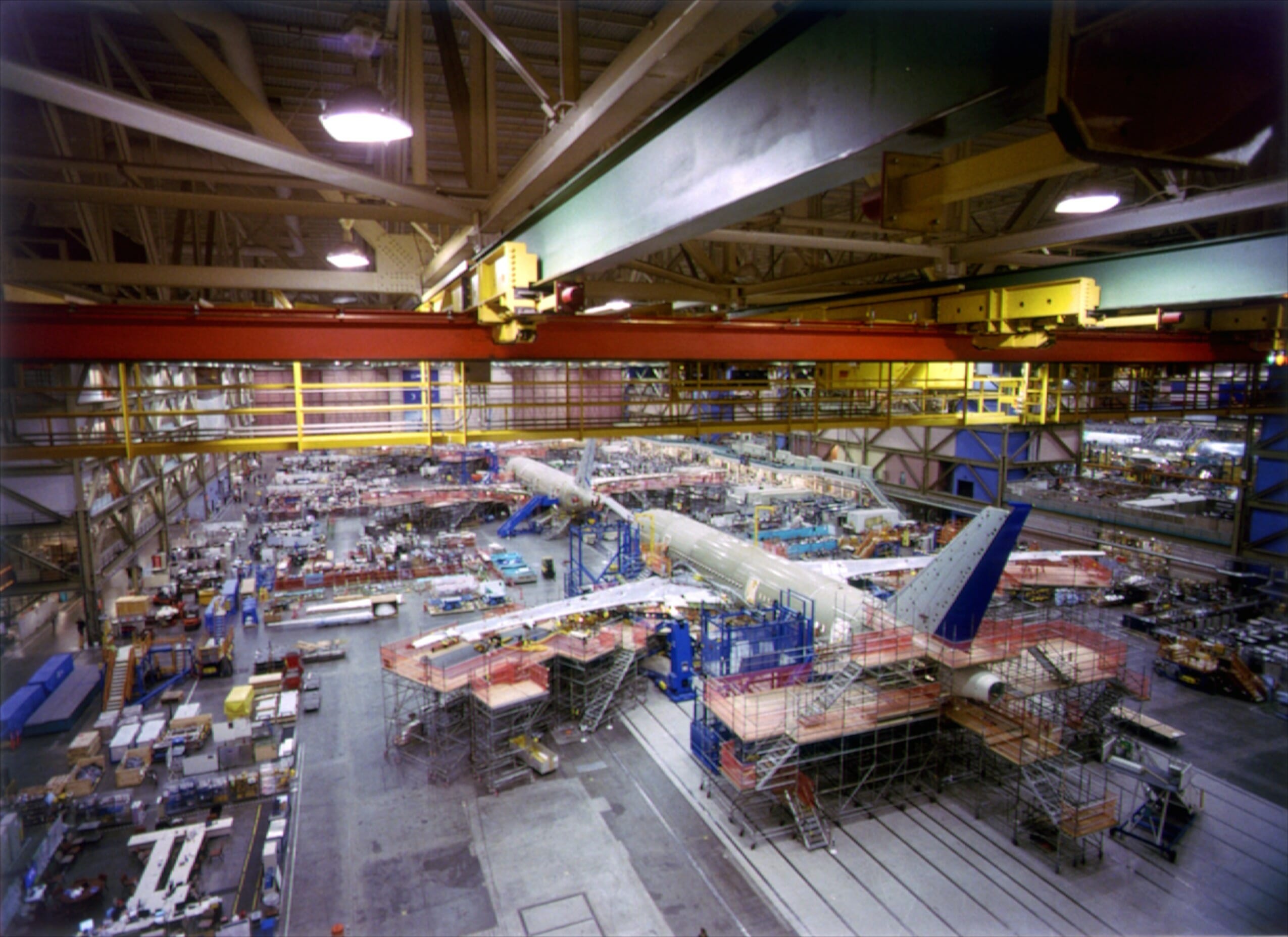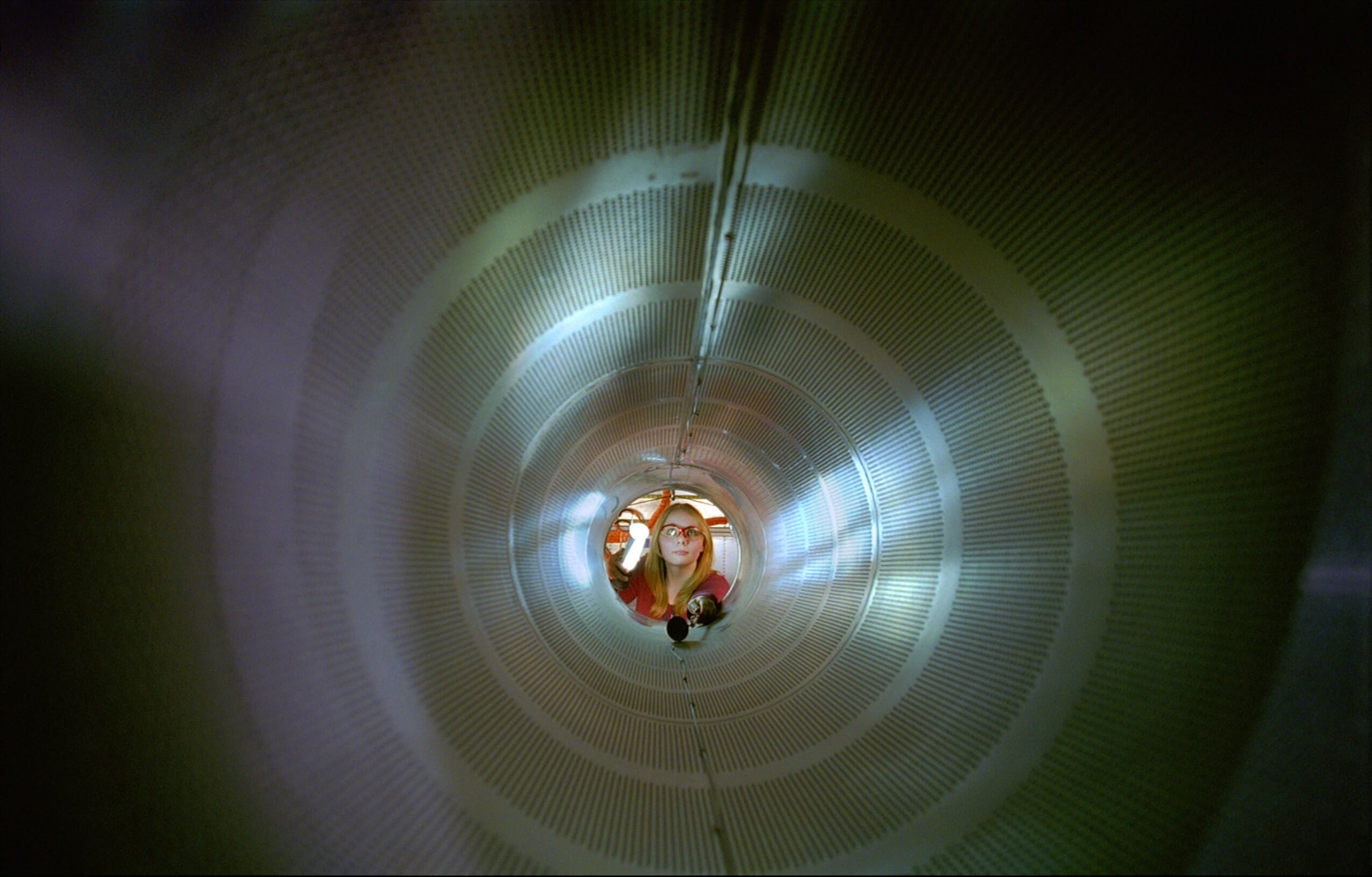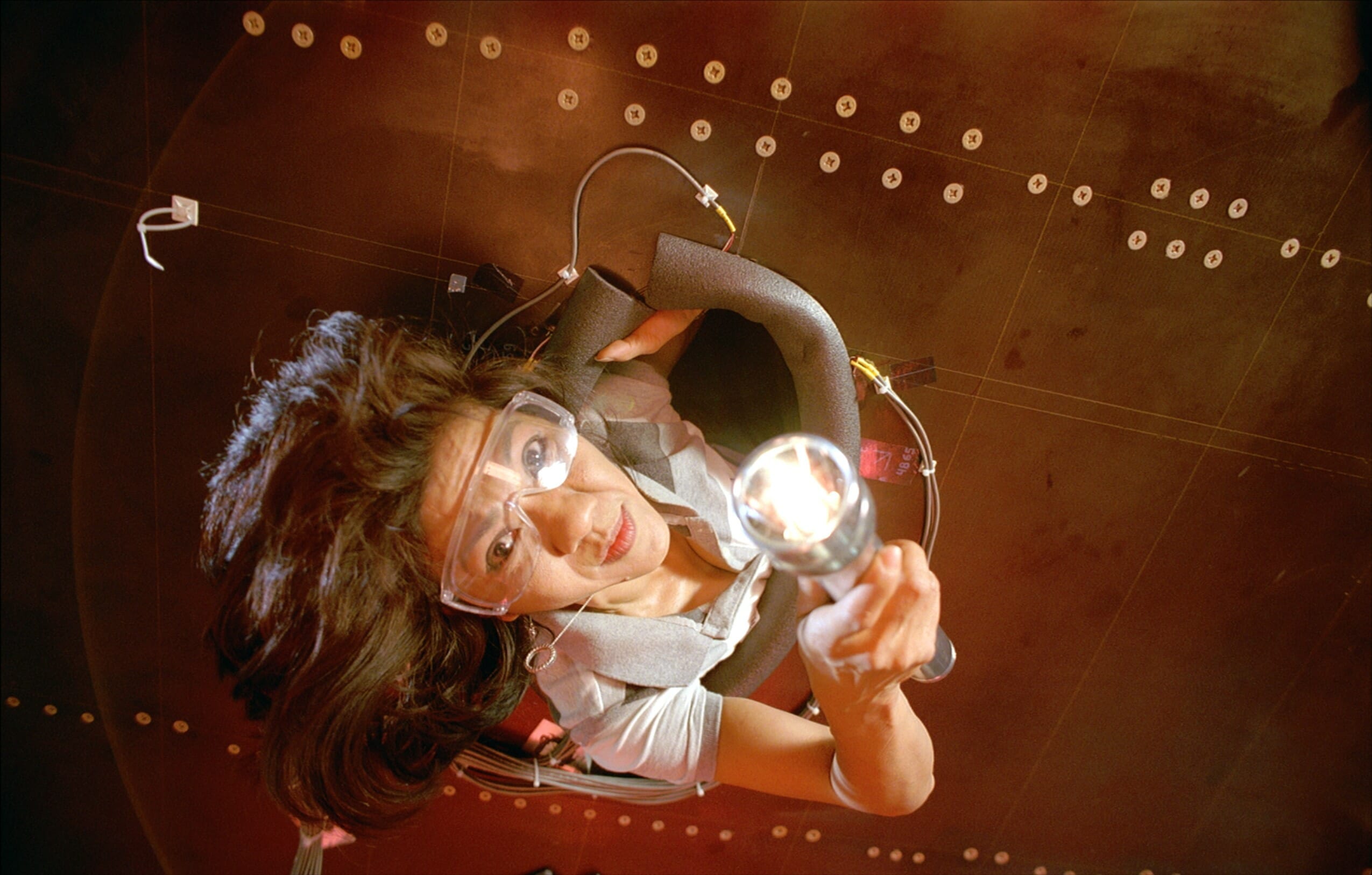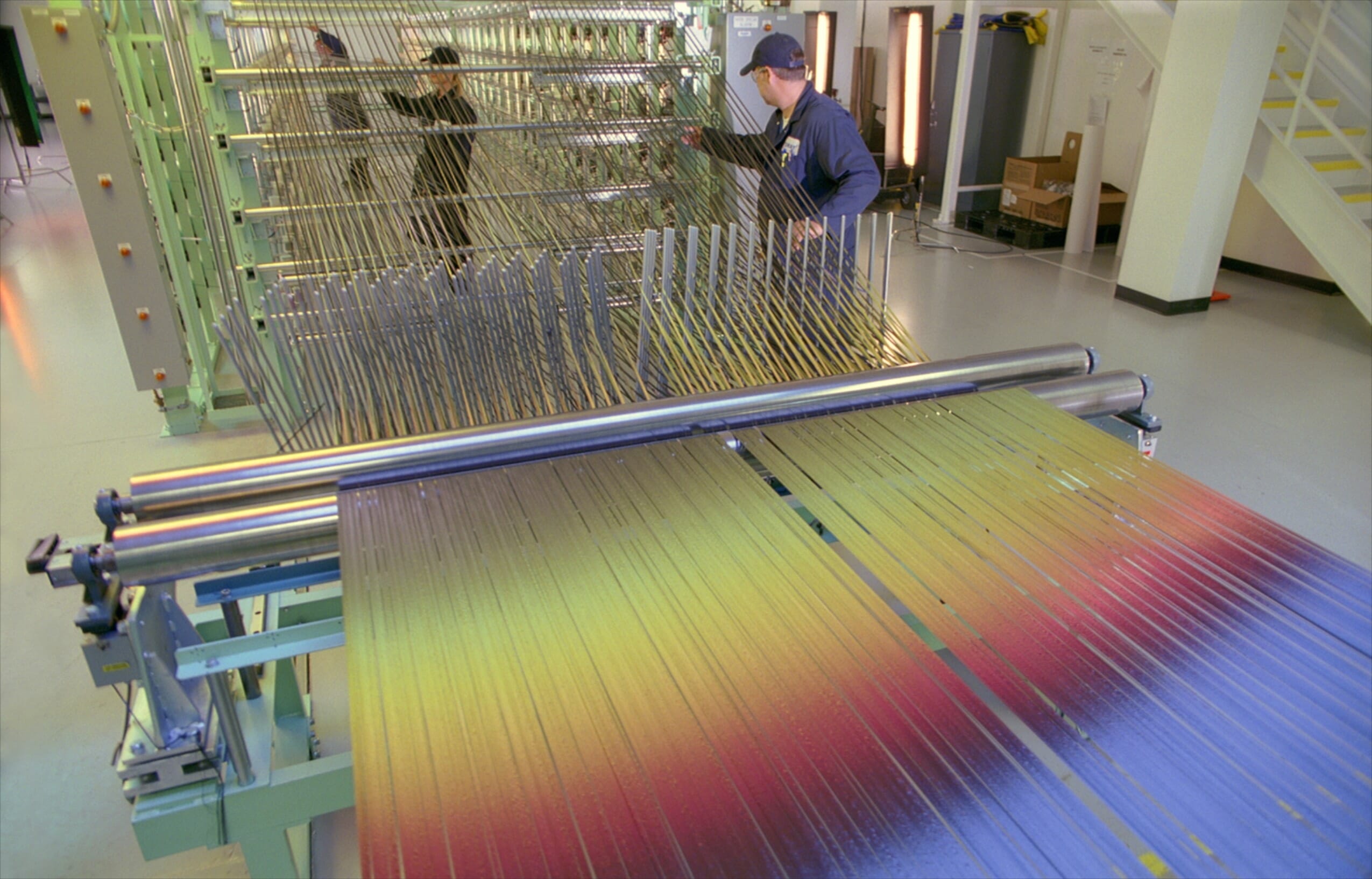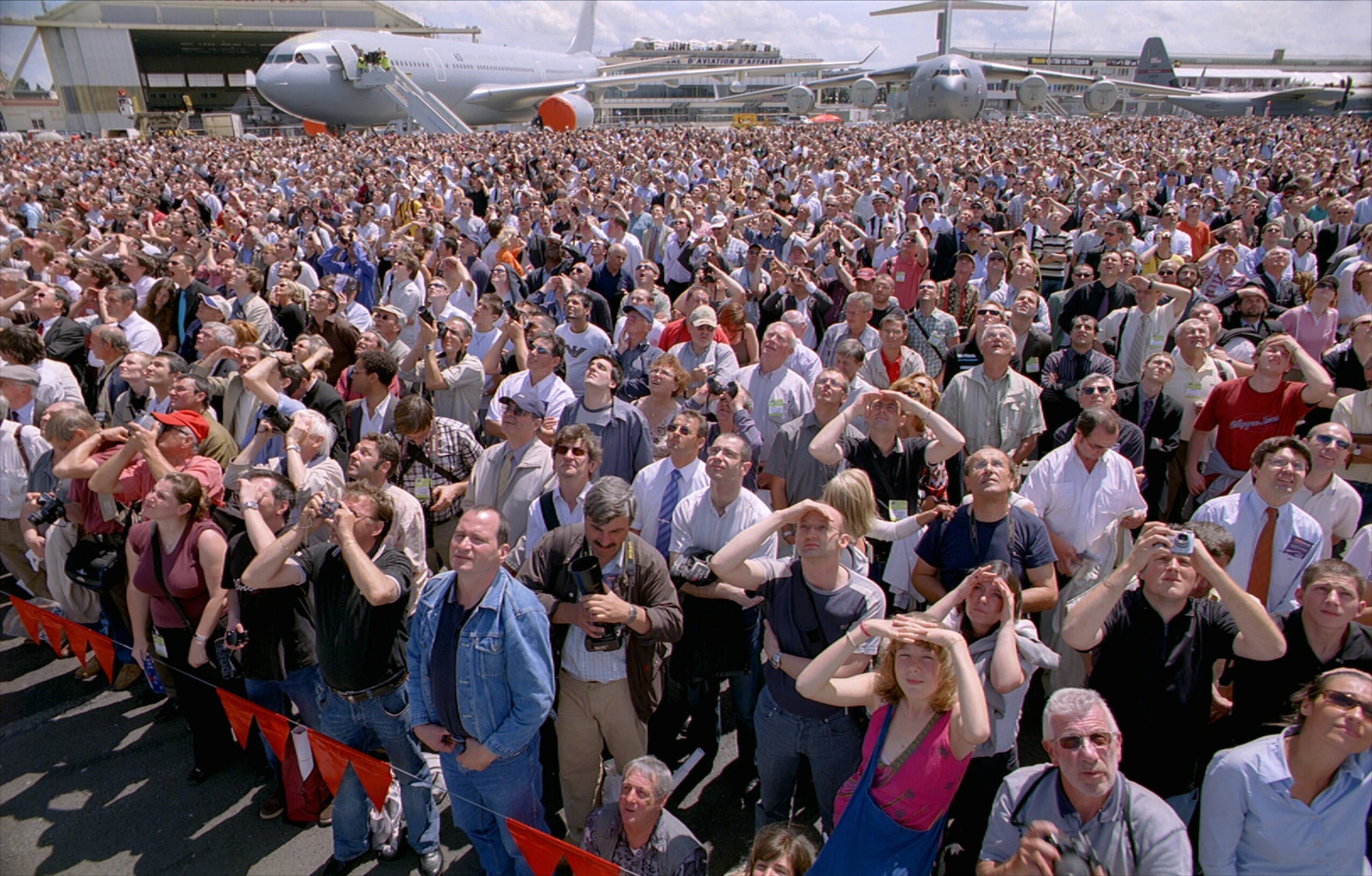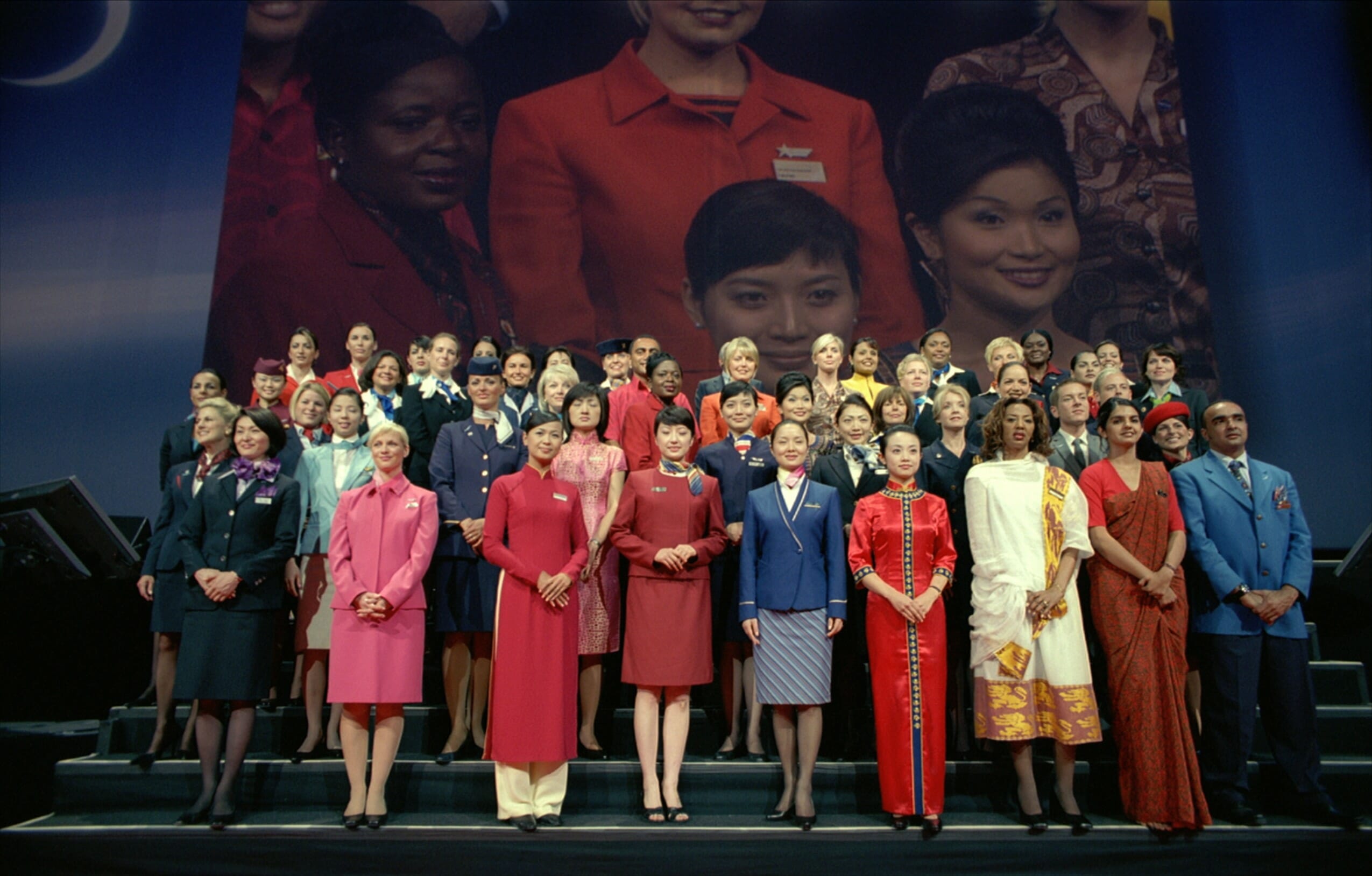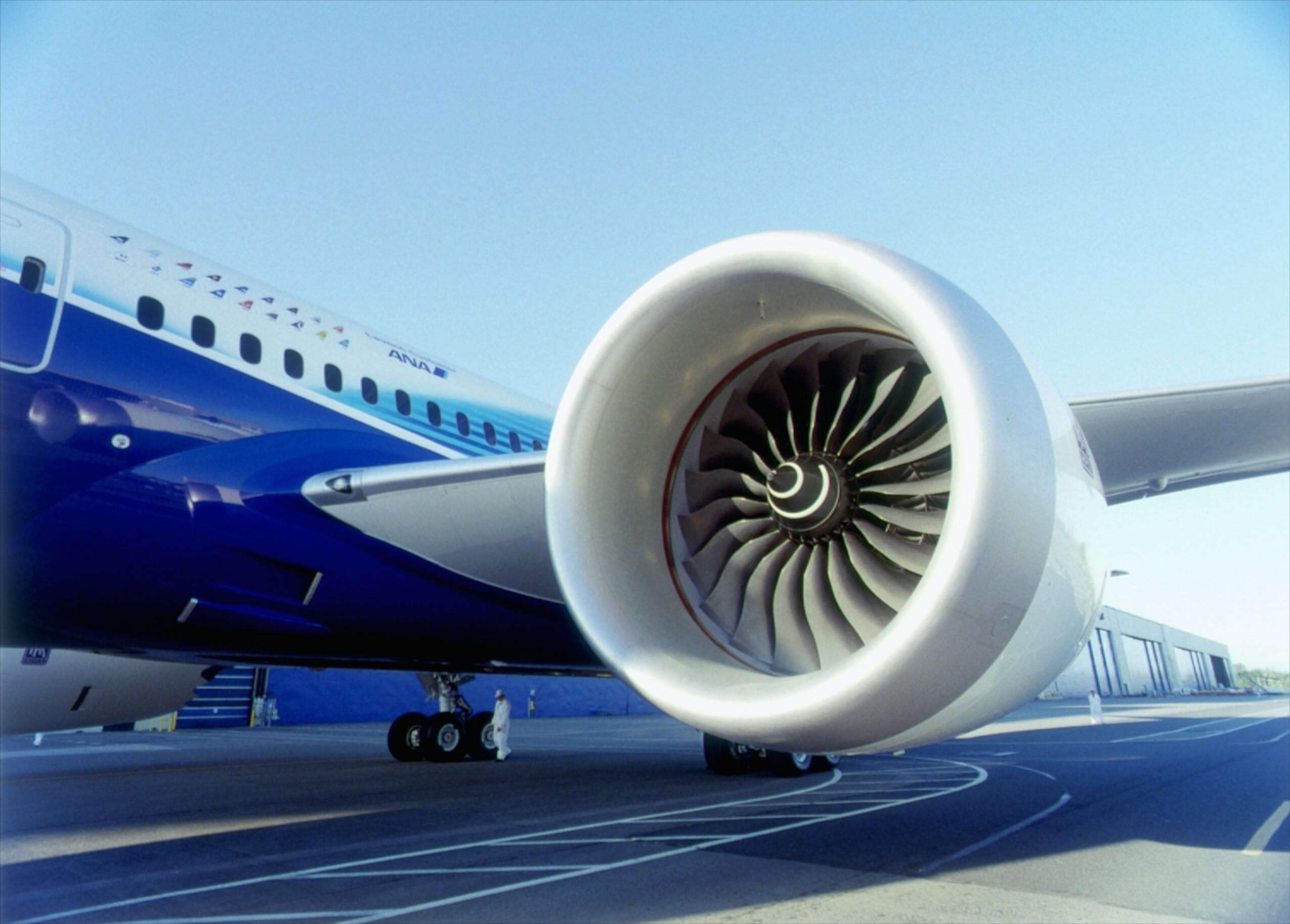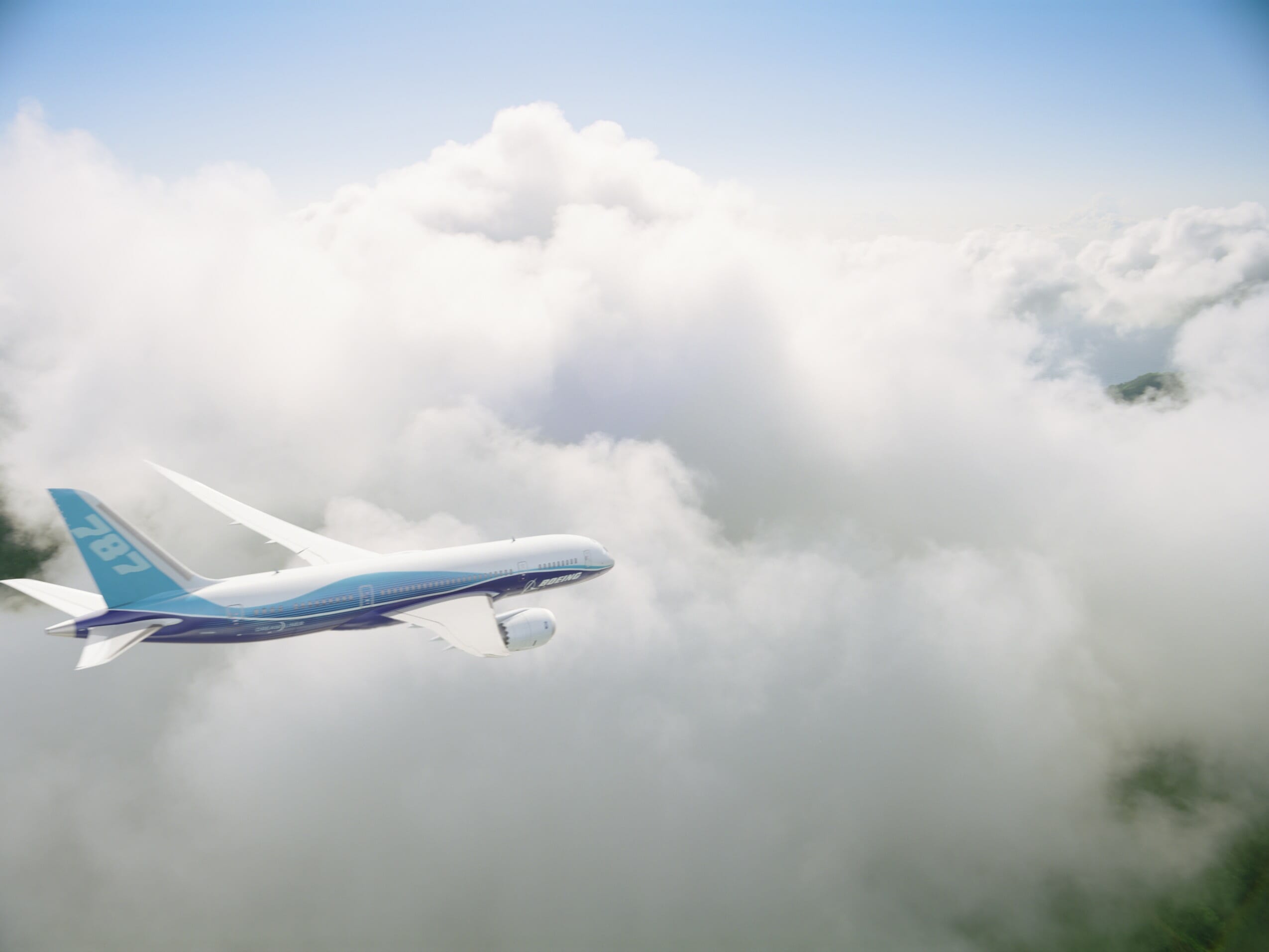


Secrets of the Universe
Secrets of the Universe
About the Film
Secrets of the Universe captures the excitement and groundbreaking science unfolding at the Large Hadron Collider at CERN–one of the largest scientific enterprises ever undertaken by humankind.
Synopsis
Galileo looked to the heavens, expanding our vision beyond our own planet. Einstein sought to understand the universe with math and a chalkboard and was perplexed by activity at the quantum level. The truth remains—there is still so much we do not know.
In Secrets of the Universe, narrator and featured personality, renowned physicist Manuel Calderon de la Barca Sanchez gives his insight on the nature of forces and matter and on the pursuit of science.
Secrets of the Universe is a sweeping, 3D giant screen adventure that immerses audiences in the greatest mysteries of our time—puzzles spanning from the infinitesimal to the infinite—and introduces the brilliant minds seeking to unravel them.
The answers await at the collision points of intellect and imagination, of theory and experiment, of the tiniest particles and the most powerful forces in the universe.
Travel with scientist Manuel Calderon de la Barca Sanchez as he journeys to the largest machine ever built, the greatest scientific instrument ever created, the Large Hadron Collider (LHC). There, he joins a global team working to uncover another amazing breakthrough in this new world of technology-driven physics. We get an inside look at the machine and come to understand just what it means to do science, teaming up for the flag of humanity to solve the universe’s greatest mysteries.
We don’t stop with the Large Hadron Collider, though. The machines we’ve built are as diverse as the secrets we’re looking for, and the people looking for them. We travel to the Laser Interferometer Gravitational Observatory (LIGO), the amazing project that recently confirmed Einstein’s century old prediction of the existence of gravitational waves. Humanity is at the edge of unprecedented scientific discovery, and we can all be a part of it!
In Theaters—(where to see Secrets of the Universe)
Official film site: secretsoftheuniversefilm.com
For theater locations: Where-to-see Secrets of the Universe

Trailer
Theme
The Big Question
What is the universe made of? The Large Hadron Collider (LHC) studies the fundamental particles that comprise all forms of matter. The LHC is the world’s most powerful particle accelerator. Located underground along the France-Switzerland border near Geneva, it took 10 years for the European Organization for Nuclear Research (CERN) to build. The LHC consists of a 27-kilometre circular tunnel surrounded by very powerful superconducting magnets, designed to engineer collisions between beams of particles at speeds approaching the speed of light (300,000 km/s).
HOW IT WORKS
Inside the accelerator, two high-energy particle beams travel at close to the speed of light before they are made to collide. They are guided around the accelerator ring by a strong magnetic field maintained by superconducting electromagnets, which must be chilled to ‑271.3°C – a temperature colder than outer space – using liquid helium.
Thousands of magnets of different varieties and sizes are used to direct the beams around the accelerator, bending and focusing them as necessary to increase the chances of collision. The particles are so tiny that the task of making them collide is like firing two needles 10 kilometres apart with such precision that they meet halfway. The beams inside the LHC are made to collide at four locations around the accelerator ring, corresponding to the positions of four particle detectors – ATLAS, CMS, ALICE, and LHCb.
WHY IT MATTERS
The LHC’s Higgs discovery provides the missing piece to the Standard Model of particle physics. The Standard Model explains how the basic building blocks of matter interact, governed by four fundamental forces: the strong force, the weak force, the electromagnetic force, and the gravitational force. It has been an incredibly successful model of the subatomic world, explaining almost all experimental results and precisely predicting a wide variety of phenomena. But it had a glitch.
Some of the particles in the Standard Model emerge without a mass, while experiment shows them to have mass. Robert Brout, François Englert, and Peter Higgs resolved this problem with a theory of an invisible field, now called the “Higgs field,” that gives these particles mass when they interact. The LHC’s experimental discovery of the associated Higgs particle is a major step for the Standard Model.
THE PEOPLE
The LHC is a massive collaboration, involving over 10,000 scientists from hundreds of universities and laboratories in more than 70 countries. This includes not only those responsible for the design, construction, and operation of the collider, but also those that run the experiments and those that analyze the resulting data. Some of the key figures include:
Fabiola Gianotti, Director-General
Frédérick Bordry, Director for Accelerators and Technology
Eckhard Elsen, Director for Research and Computing
The Production
Production Notes
Initial production work for the project began in late 2014 with research and shooting at the CERN super-collider facility which sits astride the Franco-Swiss border near Geneva. The film premiered at the National Air and Space Museum in Washington, D.C. in 2019.
About the Film
- Production Format: Digital
- Duration: 45 min.
- Released date: 2019.
- Produced by: Stephen Low Productions Inc.
- Distributed by: K2 Communications Inc. / The Stephen Low Company
- Available for license: IMAX Digital
- Official film site: https://secretsoftheuniversefilm.com
Credits
- Writtten and Directed by Stephen Low
- Directory of Photography: Tristan Breeuwer
- Featuring: Manuel Calderón de la Barca Sánchez
- Executive Producers: Mark Kresser, Robert Kresser, Pietro L. Serapiglia
- Produced by: Stephen Low
- Co-produced by: Pietro L. Serapiglia
- Edited by: James Lahti
- Lead project consultant: Greg Dick
- Executive in charge of production: Dougal Caron
- Line Producer: Michel Chauvin

Beavers
Beavers
The Director’s Cut
Welcome back the furry critter that changed the landscape. Three decades after its original release, Beavers, the worldwide family favorite, returns to giant screen theaters better than ever. Filmed with IMAX® cameras entirely in 15perf/70mm motion picture negative and digitally remastered at 8k for IMAX with Laser and other digital systems, the new Beavers “Director’s Cut” features spectacular new aerial wilderness scenes and a soundtrack remastered with 12.1 surround-sound for maximum impact.
First released in 1988, Beavers was the first giant screen feature with a natural history focus on a single creature. Exhibited in IMAX® and other giant screen theaters, the film’s furry stars and their story garnered awards and drew extensive family and school audiences and more than 10 million viewers across the planet. Beavers has screened in 21 countries in 17 different languages and remains distinctively, “the Biggest Dam Movie…Anyone Ever Saw” and for the choosy, the ultimate giant screen treat. The film is now set to wow new generations of audiences.
Synopsis
Set against the stunning and rugged backdrop of the Canadian Rocky Mountains, Beavers tells the story of a family of beavers as they grow, play and transform the world around them. The film begins with two beavers off to find a place to build a new home. Fighting adversity and exhibiting enormous perserverence, the pair build a lodge, raise a family and transform their habitat on an astounding scale.
With the giant screen relaunch of Beavers, new generations of movie-goers will have an opportunity to adventure in the Rockies, swim with this shy, hard-working creature, and discover its remarkable contribution to the natural world.
In Theaters—(where to see Beavers)
For theater locations: Where-to-see Beavers

Trailer
Theme & Inspiration
The beaver, nature’s greatest engineer and a patient builder of wetlands, remains a key player in North American ecosystems—more vital than ever in an era of shifting climate conditions. The wetland environments shaped by the beaver help reduce major flood events and maintain biodiversity. Although its natural habitat continues to be eroded worldwide, in recent decades, beavers have been reintroduced to a number of regions across the Eurasian continent in efforts to help restore and maintain wetland habitat. With the giant screen relaunch of Beavers, new generations of movie-goers will have an opportunity to adventure in the Rockies, swim with this shy, hard-working creature, and discover its remarkable contribution to the natural world.
When it was first released, the film’s intimate portrayal of the beaver and its aquatic world helped usher in a new era of giant screen natural history filmmaking and encouraged the introduction of IMAX theaters in natural history museums. In 2004, Beavers became the fifth film ever to be inducted into the Maximum Image Hall of Fame.
The Production
Production Notes
How was the film Beavers made? The article below describes some of the unique challenges that were overcome to put beavers on the giant screen.
In 1986, filmmaker Stephen Low was asked to develop a film concept for the Nagoya Regional Office of the Dentsu Corporation in Japan and their client, the Chubu Electric Power Company. Low suggested a wildlife theme: a true story about one of nature’s greatest engineers, the beaver. The previous year (1985), Stephen Low’s first giant screen film Skyward had debuted at the Tsukuba Expo in Japan. With Skyward, director Stephen Low and a team which included producer Roman Kroitor, wildlife expert William Carrick and director of photography Leonidas Zourdimas, had recorded intimately and unforgettably the elegance of Canada Geese in flight.
With Beavers, the challenge was to produce an equally intimate film about a very different kind of animal. “Our aim” says filmmaker Low, “was to use the amazing resolution and size of the 15/70 format to totally immerse the viewer in the world of the beaver. We wanted to allow the audience to swim and play amongst these creatures, face dangers with them and know their story.”
To tackle the project, a production team was assembled which included: production manager, Pietro Serapiglia; wildlife consultant, William Carrick; and director of photography, Andrew Kitzanuk. The IMAX® camera began rolling in February 1987 near Port Perry, Ontario in frigid waters under nearly 2 feet of ice. Behind the camera for the under-ice sequences, was underwater cinematographer, Mal Wolfe.
Getting the beavers’ story was not an easy operation. The beavers filmed for the production were hand-reared in a natural setting under the care of wildlife expert, William Carrick. Accustomed to the presence of humans, but untrained, the beavers went about their business while a patient camera crew watched and waited for just the right moments. No one involved in the project was completely convinced that enough of the beavers’ behavioral traits would be recorded on film before time and money ran out. The beavers after all, were proceeding at their own pace.
“I think wildlife is probably one of the best uses of IMAX,” says director Low, “because wildlife see things differently than we do and IMAX, more than any other medium, enables us to see and feel and live like they do. The real magic of wildlife in IMAX is that it lets you be with living things in places you’ve never been before; it’s not to see what it’s like to be on a roller coaster which we’ve all been on before anyway.” Low goes on: “The real roller coaster is when you’re flying in formation with a goose or swimming underwater with a beaver and living inside a beaver’s house. It’s cutting down a huge tree and being at the beaver’s perspective when it falls. We simply can’t experience wildlife with that intimacy and reality on television. Wildlife on television is so removed and distant… and more than ever, I think people need an opportunity to see and experience the world of living things around us.”
Much work went into searching for ideal locations for the dam-building and underwater sequences. Director Stephen Low, and production manager Peter Serapiglia, flew and drove over thousands of miles of Alberta territory to find suitable dam sites. In addition, Low spent several weeks in a wetsuit, climbing in and out of rivers, lakes and ponds all over Alberta looking for crystal clear water in which to photograph the beavers’ activities.
The stunning scenery and clear waters of Kananaskis Country, Alberta in the heart of the Canadian Rocky Mountains provided the principal location for the film. Filming above and below water at several different locations and at three different dam sites throughout the area, director Low and crew were able to put together an accurate and detailed portrayal of the dam construction process: from tree cutting to the finished product. The final dam depicted in the film was found in Kananaskis Country and was some 300 feet long.
To capture the mammoth proportions of the final dam and the sweeping extent of the beavers’ transformation of the land, director Low, director of photography, Kitzanuk and the IMAX camera, were suspended in a basket under a 150 foot construction crane and swung in a gigantic arc over the landscape.
In contrast to the all-encompassing view provided by the crane, the team developed a special device to record the life of the forest from the beavers’ point of view. Nick-named the “beaver-cam,” the device was a simple bracket which allowed the heavy IMAX camera to be hand-held barely half a foot above the ground. This made it possible for the camera to follow the unrehearsed and unpredictable activities of the beavers and other animals of the forest.
Speaking of the team’s labor over many months, director Stephen Low said: “we succeeded, in fact, in getting far more than I had anticipated in the way of beaver activity. In some ways we were very lucky: the beavers performed very naturally and were uninhibited by our presence, we lost only one week of shooting to bad weather and our production team was as dedicated to the project as any director could have asked.”
About the Film
- Production Format: 15/70
- Duration: 34 min.
- Re-released: 2019 as Beavers–The Director’s Cut
- Original release date: 1988.
- Produced by: Stephen Low Productions Inc.
- Distributed by: The Stephen Low Company
- Available for license: IMAX Digital, 15/70.
- For licensing information, contact: The Stephen Low Company
Credits
- Stephen Low, Director/Producer/Underwater Cinematographer
- Takashi Yodono, Executive Producer
- Peter L. Serapiglia, Production Manager (Beavers) Producer, The Stephen Low Company
- Andrew Kitzanuk, C.S.C., Director of Photography
- Eldon Rathburn, Music
Media
Clippings
“2 thumbs up”.
—Siskel & Ebert
“Leave it to ‘Beavers’ – IMAX’s Latest Triumph”
—L.A. TIMES
“Breathtaking”
The New York Times
“Beavers: a fine documentary that shines on the IMAX screen”
—Seattle Times
Beaver Facts
Some background on the beaver.
Educators: to download the teacher’s guide for Beavers, please visit our educators page.
The beaver is an amphibious rodent (order Rodentia) of the family Castoridae and the genus Castor. There are two species of beaver: the North American Castor canadensis, and the similar European Castor fiber. The beavers’ prehistoric ancestors include Castor californiensis and Castoroides ohioensis, a creature which weighed between 700 and 800 pounds. The film Beavers features the Castor canadensis which, while native to North America, can now be found in Europe and Asia as well.
The contemporary beaver has soft brown fur, a leathery paddle-shaped tail (crisscrossed by a scale-like pattern) and characteristic rodent teeth which are used principally for gnawing wood. The beaver is the largest of rodents, with the exception of the amphibious capybara of South America. A mature beaver measures about 48 inches in length and generally weighs between 40 and 60 pounds, although some may weigh much more than this — the record was set in 1921 by a beaver from Wisconsin, which was reported to weigh 110 pounds. Beavers have poor eyesight which is compensated for by acute hearing and an excellent sense of smell.
The leaves, twigs and bark of deciduous trees make up the beavers’ principal diet, with the aspen tree being a particular favorite when available. In order to effectively digest this diet, bark and wood are pre-digested in a special gland, excreted, re-eaten and then re-digested (in a manner similar to the digestive process of a rabbit). Beavers do eat a variety of other vegetation, including floating duckweed, pond lily leaves and roots, bulrushes, bracken fern, tender green grasses, and even algae.
Excellent swimmers, beavers can swim submerged for half a mile or more. They can constrict muscles in the ears and nose to prevent water from entering and they can also close their lips behind their incisors to keep water out of the mouth while cutting submerged branches. If not overly active, these creatures can stay under water for at least 15 minutes. When swimming in winter, beavers will make use of air bubbles and air pockets trapped under the ice to extend the time they can stay submerged. In an emergency situation, oxygen-rich blood otherwise being used by muscular areas of the beaver’s body can be redirected to the brain.
Beavers live in colonies. A colony may contain as little as two or as many as a dozen beavers and is located in a stream, lake or pond. Often a colony of beavers will create their own pond by building one or more dams across a stream or other water source.
Within a colony the beaver is a highly social creature. Beavers exhibit intolerance to alien beavers however, and have been known to attack and even kill an intruding one. To mark the boundaries of the colony’s territory, beavers secrete a yellow-orange liquid called castoreum from the castor glands, a pair of glands located under the skin at the base of the tail.
Beavers are nocturnal animals; while they are seen during the day, much of the beavers’ work is accomplished during the evening and night hours. One beaver or two beavers working alternately, can gnaw through the trunk of a tree fairly quickly. A tree three to four inches in diameter can be felled in under an hour. During the course of a year, two beavers may fell as many as 400 trees, some of them over a foot and a half in diameter.
Usually trees are cut within about 150 feet of the shoreline. When a tree has been felled, several beavers may participate in removing branches, cutting up limbs and dragging or floating the material to a chosen site. At the site, branches and limbs are progressively interwoven to produce a solid structure which is then sealed with rocks, mud and grass.
A dam may grow to well over 100 feet in length and the pond behind it may grow to cover several acres, providing the beaver colony with a good refuge from land-based predators. Some dams have been reported to reach well over a thousand feet in length, creating a lake with numerous lodges. In the giant screen film Beavers, the large dam is some 300 feet in length. In preparation for winter, the beavers will work to ensure that the dam is sufficiently high and the pond deep enough to prevent the water from freezing to the bottom.
For living quarters, the beavers will construct a dome-shaped house or lodge, also made of wood, mud and grass. The lodge is located in the middle of the pond, or attached to the bank of a lake or stream. Typically a lodge is about six to ten feet in diameter. Located inside the lodge and above the water level is a living chamber accessible only through underwater tunnels, of which there may be several. With the exception of a vent hole at the top of the lodge, the walls are coated with mud to provide good insulation. Over a period of years a lodge can become very large (over 20 feet in diameter and 12 feet in height) and develop several living chambers. The walls may be built up until they are over two feet thick. Beavers may also burrow into soft earth on the banks of streams or ponds, creating one or more chambers for rest and feeding.
A beaver colony contains only one active adult pair who will mate for life. Mating takes place in water in early February and beaver kits are born in early May (a gestation period of 100 to 110 days). A female will typically produce her first litter around her third birthday. A litter will usually consist of three to seven kits, although litters of up to 12 have been recorded. As with many creatures, the size of the litter varies with the age of the female, the availability of food, and the density of the population.
Kits will nurse for two to two and a half months. By the fall, the beaver kits are assisting in the winter preparations of the colony: gathering and storing food, and building dams and houses. By the time winter sets in and the pond freezes over, the kits will weigh anywhere from 11 to 28 pounds, depending upon the food available in their habitat.
Most of the young beavers will leave the colony in early spring in search of a good place to start a new family. These migrating beaver are particularly susceptible to attacks from predators such as wolves, coyotes, lynxes, bobcats, mountain lions, wolverines, bears and otters, or even from other beavers whose territory they have transgressed. Generally only a few beaver from a litter will live to reach five years of age (the survival rate may be as low as 12% ). Beavers may live to be much older however, and some have been found to have lived as long as 20 years.
The beaver has long been of economic and religious importance for the native peoples of North America. For thousands of years Indians have trapped the beaver for its meat and fur, and saved a space in their religious ceremony for the creature. With the coming of Europeans to the continent in the 16th and 17th Century, beaver fur became an important commodity in the trade between First Nations and colonists, and between North America and Europe. Indeed, the fur trade, of which beaver pelts were a major component, provided much of the impetus for early exploration and settlement of the continent. The trapping and selling of beaver pelts continues in the present age.
To many, the beaver is a destructive animal and a nuisance. This is particularly the case with farmers and others who have found their land being flooded as a result of these creatures hard work. Yet, within the realm of nature the beaver plays an important role, transforming the environment as no other creature on Earth save humans. Through dam-building, the beaver creates a water habitat for an infinite variety of new creatures. When the dam eventually breaks and the water drains from the pond, the land beneath will become rich and fertile meadow.

The Trolley
The Trolley
Synopsis
The Trolley propels giant screen audiences through the great cities of the globe to tell the story of one of civilization’s most remarkable inventions. Step aboard the talented electric trolley for a ride across the eras and through thirty-nine cities and sixteen countries…
Perfected in the 19th century workshop of American inventor Frank Sprague, the first functional electric trolley was embraced as a miracle of the electric age—a device that could rid streets of suffocating piles of horse manure and flies and even re-invent civilization. And it did.
Watch the Film
The Trolley is now available to watch here! Pop some popcorn and catch the full film above.
Then go out and change the world…
Trailer
Director’s Statement
The Trolley stares down the automobile. In climate change, humanity faces a global crisis that is in scale and complexity unlike anything we have encountered before, yet we already have the solutions. We have technological tools at our disposal to tackle greenhouse gas emissions head-on, we just don’t seem able as individuals and as a society, to change our behaviour.
The Trolley focuses on one key area of greenhouse gas production—the spectacularly wasteful urban transportation evident in almost every city in the world—and shows how we once embraced the perfect solution and then threw it away.
High-friction rubber-tired vehicles powered by internal combustion engines (or even batteries) trapped in gridlock, carrying only one or a few passengers, make no sense from a carbon-emissions standpoint, yet our society has embraced this gizmo fetish with a wild fervour. We are continually buying and selling and subsidizing the twin myths of the automobile: personal freedom and technological utility, yet in clogged urban arteries in a disintegrating environment, the car offers neither.
The Trolley delivers an alternative sales pitch: a plea for shared transportation, equal access, electrical efficiency and the proven frictionless physics of steel wheels on steel rails. The electric trolley is so yesterday, but it needs to become our tomorrow.
—Stephen Low, Filmmaker
Galleries
Theme & Inspiration
A Tale of Cities. As a child growing up in Montreal in the 1950s, filmmaker Stephen Low had an opportunity to ride the streetcar with his father, before that city scrapped its streetcar lines in the early 1960s, replacing them like many North American cities, with buses and with raised highway networks and vast numbers of cars. Living and working in Toronto in the 1980s and 90s, Low would get an opportunity to reconnect with the streetcar and wonder at its talents and persistence in a fast-growing, car-dominated metropolis. Why could some cities keep their trolleys and some not, and what did this mean for urban dwellers and the future of cities and indeed, civilization? With people in love with their cars, even talking about better alternatives has remained a social challenge—one the filmmaker has felt driven to address.
Geared for giant screen exhibition in museums and science and technology centers globally, The Trolley addresses the history and technology of public transit and the evolution of cities—from the perspective of the electric trolley.
Many cities have had their own particular trolley experiences, yet in many ways, the story of the electric trolley is universal, epic and in the view of the filmmaker, critical to the future of humankind. The trolley, tram or streetcar, as it is variously called, has been much ignored, even forgotten. By telling the story of the trolley as a single, century-and-a-half rollercoaster ride of innovation, achievement, near extinction and renaissance, the film reveals how society, gripped by a growing and persistent auto mania, has drastically undervalued the enormous efficiencies and benefits intrinsic to this 19th century invention.
The Production
Locations and Shooting
To capture the epic scope of the trolley story meant going to where the trolleys run. The Trolley was shot over more than two years, with the production team filming in Toronto, Geneva, Lyon, Montpellier, Marseille, Nice, Milan, and Hong Kong, as well as Seattle, Dallas, Houston, San Diego, Los Angeles and Pasadena. Altogether, using live action footage and archival imagery, the film depicts a wide range of trolley technology in some 39 cities in 16 countries. Hong Kong offers double-decker trolleys consistent with the city’s extreme verticality. Milan boasts iconic wooden trolleys from the 1920s still serving its citizens. Some run station-to-station as light rail, others sweep down grass-covered boulevards, stopping on demand, or brave the sleet and snow as in Toronto.
The Toronto Story
Toronto became a focus in The Trolley because of the city’s enduring connection with the technology. The city’s first electric trolley began running in 1892 and Toronto is one of the only centers in North America to develop and maintain an extensive network to the present day, despite detractors and actual plans in the 1960s to scrap the system.
Filming in Toronto was undertaken throughout the Toronto Transit Commission (TTC) system and included the classic and still ever-present red rockets (1977-present), the PCC cars (1938-1995) and the wooden Peter Witt trolleys that operated from the early 1920s into the 1960s, as well as the manufacturing and introduction of the new Flexity tram. Shooting also included filming at the Bombardier assembly plant in Thunder Bay as well as at The Halton County Radial Railway (HCRR) operated by the Ontario Electric Railway Historical Association (OERHA).
Format
The film weaves together live-action trolley journeys and urban street scenes with computer graphic reconstructions, maps and aerials. A wide array of archival footage and restored photographs help relate the remarkable history and changing fortunes of trolleys around the world. Filmed for presentation in IMAX and other giant screen theaters, the project was captured principally in ultra-high definition digital, with some scenes shot on classic 15perf./65mm motion picture negative.
About the Project
- Running time: 45-min.
- Director: Stephen Low
- Producer: City of the Future Films Inc. / The Stephen Low Company
- Distributor: Stephen Low Distribution Inc.
- Formats: Available in IMAX® laser digital 2D and all digital 2D theatrical formats
Cities in the Film
Toronto, ON
Milton, ON
Thunder Bay, ON
Calgary, AB
Portland, OR
Seattle, WA
Dallas, TX
Houston, TX
San Diego, CA
Los Angeles, CA
Pasadena, CA
Geneva, Switzerland
Montpellier, France
Marseilles, France
Nice, France
Milan, Italy
Vienna, Austria
Berlin, Germany
Brussels, Belgium
Hong Kong
Cities represented in archival stills or footage:
Richmond, VA
Queens, NY
Brooklyn, NY
New York, NY
San Francisco, CA
Long Island, CA
Chicago, IL
Saint Petersburg, Russia
Munich, Germany
Cologne, Germany
Dresden, Germany
Blackpool, England
London, England
Lancashire, England
Southampton, England
Cork City, Ireland
Shanghai, China
Cairo, Egypt
Hanoi, Vietnam
Hiroshima, Japan
Media
Clippings
Interview with filmmaker Stephen Low about The Trolley
[FEATURE/INTERVIEW] – audio clip
CBC Radio Here and Now, Toronto
Broadcast on: May 23, 2018
Director Stephen Low on his new doc The Trolley, the beauty of streetcars and shooting on IMAX – [FEATURE/INTERVIEW]
Globe and Mail
By Barry Hertz
Published on: April 30, 2018
‘The Trolley’ documentary explores the history of light-rail vehicles – [FEATURE/INTERVIEW]
CityTV
Aired: June 1, 2018
‘The Trolley’ gives Toronto streetcars their long-deserved closeup – [FEATURE/REVIEW]
Toronto Star
By Ed Keenan
Published on: May 3, 2018
Hot Docs 2018 Review: The Trolley – [FEATURE/REVIEW]
Scene Creek
By Dani Saad
Published on: April 28, 2018
The Trolley – [REVIEW]
The Gate
By Andrew Parker
Published on: June 1, 2018
The Trolley: Genius Invention Gets Love from IMAX Treatment – [FEATURE/REVIEW]
Original-Cin
By Liam Lacey
Published on: May 4, 2018
New documentary a ‘love letter’ to streetcars and trolleys – [FEATURE]
CityNews
By: News Staff
Published on: March 20, 2018
Toronto’s Hot Docs Festival reaches gender parity with 2018 lineup – [MENTION/SOUNDBITE]
The Globe and Mail
By: Barry Hertz
Published on: March 20, 2018
Hot Docs Finally Achieves Gender Parity with 2018 Lineup – [MENTION]
Exclaim!
By: Josiah Hughes
Published on: March 20, 2018
Media Contact
Media inquires:
Sophie van Bastelaer, AlphaPR
+ 1 647-901-6416
sophie@wearealphapr.com
Amy Saunders, AlphaPR
+1 647-282-0269
amy@wearealphapr.com

Rocky Mountain Express
Rocky Mountain Express
Filmed in 15/70 (IMAX)

Synopsis
Rocky Mountain Express propels audiences on a steam train journey through the breathtaking vistas of the Canadian Rockies and highlights the adventure of building a nearly impossible transcontinental railway. Recruited to realize this venture—one of the greatest engineering feats of all time—were engineers and laborers from around the world. The film weaves together spectacular IMAX aerial cinematography, archival photographs and maps, and the potent energy and rhythms of a live steam locomotive to immerse audiences in this remarkable story from the age of steam.
Trailer
About the Film
- Released: 2011
- Produced and distributed by: The Stephen Low Company
- Director: Stephen Low
- Length: 45-min.
- Formats: 15/70, Digital 2K/4K
- Availability: 2D
- Featuring: CPR 2816 “The Empress”
Where to See It
The Making of Rocky Mountain Express
See how the film was made: “The Road to Rocky Mountain Express” [Article].
Credits
- Directed and Photographed by: Stephen Low
- Produced by: Pietro L. Serapiglia, Alexander Low, Stephen Low
- Editor: James Lahti
- Exec in Charge of Production: Dougal Boone Caron
- Aerial Photography: Ralph Mendoza
- Helicopter Pilot: Steve Flynn
- Director of Photography: Mark Poirier
- Additional Photography by: William Reeve
- Original Music by: Michel Cusson
- Written by: Stephen Low
- VFX Supervisor: Mario Rachiele
- Associate Producer: James Lahti
- Sound Design: Peter Thillaye
- Narrated by: Michael Hanrahan
- Production Manager: Michel Chauvin
- Post Production Manager: Jill Kasian
Awards
- Best Film—Rocky Mountain Express; Giant Screen Cinema Association (GSCA), Sacramento California, 2012
- Best Cinematography—Rocky Mountain Express; Giant Screen Cinema Association (GSCA), Sacramento California, 2012
- Best Sound Editing, Special Venue—Rocky Mountain Express; MPSE Golden Reel Awards, 2012
Clippings
“This is awesome! You’re going to want to take the whole family.”
—Dina Pugliese,
City TV, Breakfast Television, Toronto
IMAX film features spectacular scenery, thrilling sequences…
* * * 1/2 [Three-and a-half stars]
—Jay Stone,
The Ottawa Citizen / Postmedia News
“Rocky Mountain Express is not just a glorious, flag-waving account of how a young nation completed a sea-to-seaway rail line, driving the last spike at Craigellachie, B.C., in 1885. It’s also a story of mudslides and avalanches, balky steam engines that blew their boilers on steep grades, and miles of track that at one point advanced by just five feet per day, at a cost of six lives per mile.”
* * * [3-stars]
—Chris Knight, National Post
“…an amazing IMAX film…incredible story of how Canada’s first transcontinental railway was laid. Veteran director Stephen Low uses incredible IMAX aerial photography and breathtaking vistas to put the audience into the landscape. Through archival photos and beautifully animated 3D maps you get a sense of how difficult it was to lay each mile of track. If you enjoy landscape photography as I do then you will absolutely love this film. …The sound design in the film is also first rate. How can you go wrong with a steam locomotive on an IMAX screen? I often felt like I was sitting beside the tracks when the train whisked by onscreen.”
—www.bombippy.com
“With just the right blend of excitement, history and the beautifully filmed Canadian landscape, this film will appeal to both parents and children alike.”
—http://www.kidsaroundcanada.com/blog/2011/10/rocky-mountain-express-review/
“In a new IMAX film, viewers will feel like they are flying over, or riding on, a train that cuts through rugged, steep mountains in one of the planet’s most breathtaking spots…’It was breathtaking; it was awesome,’ says Beth O’Donnell, 59, of Ruff Creek, Greene County, who attended a preview of the movie with her husband, Mike. ‘You felt like you were right on (the train).’”
—Kellie B. Gormly, Pittsburgh Tribune Review
“A restored steam engine roars through cliffs and valleys in ‘Rocky Mountain Express…’ This is a film primarily about images and sounds, and the footage captured by Low—just the sheer theatricality of the train itself–is indeed stunning. An engine chugs alongside a river, a heavy plume of steam drifting back, and the picture is mirrored perfectly in the watery reflection just below. It’s a gorgeous, poetic tableaux. Later, the train pulls into a station, steam shooting from valves, huffing like a horse expelling air through it’s nostrils. Low also includes some terrific archival photos, including one of a steam engine caught in mounds of snow after an avalanche, which remains a problem for sections of the route.”
—Nina Metz, Chicago Tribune
“…the film does an amazing job of making you realize just how hard a task it must have been to construct a railway line through the Rockies. Is anyone from out west? If so, you know just how huge the mountains are, and seeing those mountains on an IMAX screen was jaw dropping.”
—Sarah Sorensen, owlblog@owlkids.com
“Rocky Mountain Express is totally awesome. The film takes you on a magical journey with the Canadian Pacific Railway’s #2816 over the Canadian Rockies. Not only do you get great shots of 2816, but the scenery across Canada is breath taking. The route is Canada’s first transcontinental railways. This film is a must-see for all railroad enthusiasts and everyone who wants to experience the beauty and majesty of God’s creation.”
—Father Jay Finelli, www.steamingpriest.com

Rescue 3D
Rescue 3D
2011 / Released in IMAX 3D
Synopsis
Rescue plunges audiences into the hard, but inspiring work of saving lives in the face of a natural disaster. Behind the scenes, the film follows a Canadian naval commander, two pilots, and a volunteer rescue technician as they train for action. As Rescue opens we are introduced to the film’s featured personalities and are thrust into some of their remarkable training, at sea, in the air and on the ground, discovering something of their backgrounds, pastimes and motivations. When an earthquake strikes Haiti, creating one of the biggest humanitarian disasters of the century, the audience is swept along, joining with the massive effort that brings military and civilian responders and hardware from around the world. Rescue is a journey of real-world disaster and emergency response captured (in 3D) with unprecedented scale and impact for the giant screen.
About the Film
- Released: 2011
- Produced by: The Stephen Low Company
- Distributed by: K2 Communications and The Stephen Low Company
- Length: 45-min.
- Formats: 15/70, Digital 2K/4K
- Availability: 3D / 2D
The Making of Rescue 3D
See how the film was made: “The Making of Rescue 3D“ [Article].
Where to See It
Credits
- Written and Directed by: Stephen Low
- Produced by: Alexander Low, Stephen Low, Pietro L. Serapiglia
- Executive Producers: Robert Kresser, Jan Baird Associate
- Associate Producers: James Lahti, Charles Brown
- Line Producer: Michel Chauvin
- Exec in Charge of Production: Dougal Boone Caron
- Editor: James Lahti
- Director of Photography: Mark Poirier
- Original Music by Michel Cusson
- Aerial Photography: Ralph Mendoza
- Sound Design: Peter Thillaye
- Post-Production Manager: Jill Kasian
“In tribute to the men and women in military and volunteer organizations around the world who come to the aid of those in need wherever disaster may strike” –Boeing
Produced with the support of: Canadian Forces Maritime Command
Visit the official website: http://www.rescue-film.com
Awards
First Prize, Current Affairs—Rescue; 22nd International Military Film Festival, Bracciano, Italy, 2012
Clippings
For articles and reviews, visit the official film site.
Reviews: www.rescue-film.com/in-the-media/reviews/
Articles: www.rescue-film.com/in-the-media/articles/

The Ultimate Wave Tahiti 3D
The Ultimate Wave Tahiti
2010 / released in IMAX 3D
Synopsis
Featuring nine-time world surfing champion Kelly Slater, The Ultimate Wave follows a quest to find the perfect wave-riding experience. Filmed in Tahiti and among the islands of French Polynesia, the film showcases dramatic giant screen surfing action in a unique Pacific paradise.
Kelly Slater and a group of friends arrive in Tahiti. With their host, Tahitian surfer Raimana Van Bastolaer they will seek out the best waves breaking on the reef at the famed surf site Teahupo’o. Kelly and Raimana share a passion for the waves, but different ideas about what surfing means: is it a modern competitive sport or an ancient Polynesian wave-riding art? Either way, if the right conditions arise, they hope to surf some unique giant barrels created by storm swells breaking atop the shallow reef.
As the surfer’s quest unfolds, the film explores the hidden forces at work shaping the waves and the islands that lie in their path. In stylized animated segments, the audience is propelled into the cosmos to discover the sources of a wave’s energy; and then back to Earth to witness the swirling dance of the atmosphere that will transfer energy deep into the ocean and shape a wave’s long journey across thousands of miles of open Pacific.
About the Film
- Release date: 2010
- Length: 45-min. and 24-min. versions
- Release Format: 15/70 3D & 2D
- Produced by: The Stephen Low Company / Perfect Wave Productions Inc.
- Distributed by: K2 Communications & Stephen Low Distribution Inc.
- Formats: 15/70, 8/70, Digital 2K/4K, Digital 2D/3D, Full Dome, HD/SD
- Availability: 3D and 2D
Where to See It
Credits
- Directed by: Stephen Low
- Produced by: Pietro L. Serapiglia, Stephen Low
- Editor: James Lahti
- Narrated by: Michael Hanrahan
- Written by: Alexander Low
- Exec in Charge of Production: Dougal Boone Caron
- Supervising Producer and Creative Consultant: Kelly Slater
- Executive Producers: Jeff Cutler, Terry Hardy, Stephen Low, Mark Kresser
- Action Sports Consultant: Ryan Kresser
- Associate Producers: James Lahti, Alexander Low
- Director of Photography: Mark Poirier
- Surf Director of Photography: Mike Prickett
- Underwater Photography: Stephen Low
- Additional Surf Photography: Ron Condon
- Aerial Photography: Ralph Mendoza
- Original Music by: Michel Cusson
- IMAX SANDDE Technology provided by IMAX Corporation
- SANDDE Animator: Peter Stephenson
- Visual Effects Supervisor: Mario Rachiele
- Sound Design: Peter Thillaye
- Production Manager: Michel Chauvin
- Marine Coordinator: Raimana Van Bastolaer
Awards
Outstanding Achievement in Action Sports Filmmaking—Ultimate Wave Tahiti; Newport Beach Film Festival, Newport Beach, California, 2010
Bronze Palm Award—Ultimate Wave Tahiti; Mexico International Film Festival, 2011
Jury Lycéen Award—Ultimate Wave Tahiti; Festival Les Toiles de Mer, 2011
Best Film, Sports Category—Ultimate Wave Tahiti; Blue Ocean Film Festival, Savannah, Georgia, 2010

Legends of Flight 3D
Legends of Flight
2010 / released in IMAX 3D
Synopsis
Fly in the cockpit of some of aviation history’s most amazing aircraft. See how the design challenges, financial risks and the many lessons learned from a century of aviation trial and error have brought us to the dawn of a new era of revolutionary aircraft — Boeing’s 787 Dreamliner and the Airbus 380. Witness the construction and final assembly of the 787, and join chief test pilot Mike Carriker as he puts the new airliner through its rigorous test flights.
About the Film
- Legends of Flight is directed by Stephen Low and produced by Pietro L. Serapiglia and executive produced by K2 Communications.
- Release date: 2010
- Format: released for exhibition in IMAX/IMAX 3D
- Duration: 44 min.
- Produced by: The Stephen Low Company
- Distributed by: K2 Communications and The Stephen Low Company
Visit the official website for the film: www.legendsofflightfilm.com
Where to See It
Credits
- Writer/Director: Stephen Low
- Producers: Pietro Serapiglia, Stephen Low
- Executive Producers: Robert Kresser, Jan Baird
- Associate Producers: James Lahti, Alexander Low
- Exec in Charge of Production: Dougal Boone Caron
- Editor: James Lahti
- Narrated by: Michael Hanrahan
- Directors of Photography: William W. Reeve, Mark Poirier
- Original Music by: Michel Cusson
Awards
Best Short Documentary—Legends of Flight; Skyfest, Asheville, North Carolina, 2011
Silver Palm Award—Legends of Flight; Mexico International Film Festival, 2011

Volcanoes of the Deep Sea
Volcanoes of the Deep Sea
Filmed in 15/70 (IMAX)
Synopsis
Volcanoes of the Deep Sea reveals the astounding sights that lie 12,000 feet below the surface of the ocean, while delivering a real-life tale of mystery as scientists search for an animal that may be one of Earth’s greatest survivors—an ancient species that is decorating the deep sea floor with its strange hexagonal trademark. In pursuit of this elusive animal and an understanding of its mysterious habitat, the film propels audiences from the dramatic sea cliffs of Spain, through two oceans, into deep-sea sites dense with astounding life forms and even into the far reaches of space.
About the Film
- Release date: 2003
- Duration: 43 min.
- Production format: 15/70
- Produced by: The Stephen Low Company / Volcanic Ocean Films Inc.
- Distributed by: The Stephen Low Company
- Available for license in: 15/70, 8/70, HD
- Available on DVD in stores and online
Educators | Teacher’s Guide
Volcanoes of the Deep Sea represents a unique opportunity for students and educators to explore one of the great frontiers of science and some of the world’s most extraordinary habitats. See and download the companion Teacher’s Guide for Volcanoes of the Deep Sea.
Credits
- Stephen Low, Film Director
- Ed Harris, Narrator
- James Cameron, Executive Producer
- Pietro L. Serapiglia, Producer
- Alexander Low, Producer
- Richard A. Lutz, Science Director
- Emory Kristof, Supervising Producer
- William Reeve C.S.C, Director of Photography
- Michel Cusson, Composer
- James Lahti, Associate Producer/Film Editor
- Peter Rona, Associate Science Director
Awards
Grand Prize, Best Film of the Year—Volcanoes of the Deep Sea; La Géode Film Festival, Paris, 2004
Kodak Vision Award—Volcanoes of the Deep Sea; Giant Screen Theater Association (GSTA), 2004
Special Achievement in Film Award—Volcanoes of the Deep Sea; Giant Screen Theater Association (GSTA), 2004
Honorable Mention for Educational Value—Volcanoes of the Deep Sea – 6th Annual Montana CINE International Festival, Missoula, Montana, 2009
International Finalist, Marine and Earth Sciences—Volcanoes of the Deep Sea; Blue Ocean Film Festival, Savannah, Georgia, 2009
Honorable Mention, Ocean Exploration and Adventure—Volcanoes of the Deep Sea; Blue Ocean Film Festival, Savannah, Georgia, 2009
Honorable Mention, Marine Animal Behavior—Volcanoes of the Deep Sea; Blue Ocean Film Festival, Savannah, Georgia, 2009
Best Scientific Exploration Film—Volcanoes of the Deep Sea; The Explorers Club Documentary Film Festival, New York, NY, 2007
Scientific Literacy Achievement Award—Volcanoes of the Deep Sea; Association for Biomedical Reasearch, 2005


Where to See It
Image Gallery
Film Trailer
Clippings
“Illuminates the dark world of the vents as never before”
—William J. Broad – New York Times
“Unprecedented views”
—Ellen Baskin – Los Angeles Times
“Remarkable”
—Lael Loewenstein – Variety
“Exhilarating…infuses one’s day with an inspiring sense of cosmic humility.”
—Chuck Wilson – L.A. Weekly
“You’ll be amazed…”
—Francine Brokaw – El Segundo Herald
“…a stunning and informative trip to an alien world where life on Earth may have originated. …a visual experience that is almost guaranteed to alter your view of life on this planet.”
—Tom Paulson – Seattle Post-Intelligencer
“Beautiful candy for the eyes.”
—Entertainment Today

Production Notes: Lighting, Filming and Exploring the Coolest, Hottest, Deepest, Most Alien Places on the Planet
More Light than Ever. Before he’d even wrapped Titanica, his 1993 deep-sea experience, Stephen Low wanted to do a film on hydrothermal vents. “We knew the most interesting thing in the deep ocean was not a bunch of wrecks, but the vents,” he says, “easily one of the most important discoveries in the history of exploration.”
It took nearly ten years to bring Volcanoes of the Deep Sea to the screen, but it was worth the wait to do it right. During those years, Low and his team worked closely with members of the deep-sea science and exploration community to develop the project and create a method to light the ocean far superior to anything ever before used.
It was a unique partnership with Rutgers University and leading deep-sea scientists working at the institution that ultimately made the venture possible. Rutgers biologist Dr. Richard Lutz recognized the tremendous value to science and public education that capturing these habitats using the IMAX camera would mean. Although scientists videotape vents on a regular basis as part of their research, no one had been able to light and record these habitats at any significant resolution and scale.
In 1999, with a series of dives scheduled at a deep-sea vent site Lutz was studying, the group saw a window of opportunity…and took the plunge. With some funding in place from the National Science Foundation and investment by The Stephen Low Company, the team began shooting in late 1999, testing a new lighting array and camera configuration on the deep sea submersible Alvin. The test took place during an expedition to a deep-sea vent site known as 9°North, located in the Pacific in 9,000 feet of water. Filming during four dives to the bottom proved that not only was a giant-screen film going to be possible, it was going to be breathtaking.
“It was great,” says Alvin pilot Bruce Strickrott. “Here we are with all these lights and we can see twice as far as normal.” Alexander Low, a producer on the project enthused that the footage “exceeded the team’s expectations.” The dives also revealed new findings chronicled in National Geographic Magazine (February 2003 and October 2000) and American Scientist. Volcanoes of the Deep Sea was on its way to becoming a reality.
With the help of Rutgers University, major funding from the National Science Foundation, and support from science centers, the project amassed a $7.0 Million USD budget (plus an extra million dollars worth of dive time on the submersible Alvin) and production began in earnest.
One of the keys to getting the film right was lighting — no surprise, given that the deep ocean is pitch black. Titanica pioneered the use of HMI lights underwater, offering the best views yet of the ocean floor. After screening a pre-release version, director James Cameron was impressed enough to use the same type of array to help light his Oscar-winning epic on the same subject. Cameron was to become an early investor in Volcanoes of the Deep Sea. As impressive as Titanica was, Volcanoes of the Deep Sea shines even more light — 4,400 watts — out much farther into the water.
Fast forward to August 4, 2001. The research vessel Atlantis pulls out of the Azores. Owned by the US Navy and operated by Woods Hole, the 274-foot (83 meter) Atlantis can chug halfway around the world before needing a break. It carries the film production crew, scientists, and Alvin, modified to accommodate the 200-pound IMAX camera. Also along on the month-long cruise are six members of the film’s education outreach program — a testament to the importance of education in the project.
Flying Blind. Alvin normally operates with one pilot and two scientific observers. But for Volcanoes of the Deep Sea the IMAX camera sits in the pilot’s seat. The pilot steers from the starboard observer’s seat while watching several video feeds. Chief Alvin pilot BLee Williams, who has nearly 300 dives under his belt, says the experience was disorienting at first. “I wasn’t using all my normal senses… What didn’t work was my idea to stand behind the camera and cameraman, lean over them both and look past the IMAX lens out the pilot’s viewport… I quickly went back to looking out the side window and watching the video.” Not only is the pilot flying blind, the cinematographer has to work with no assistant. “It’s a bit improvisational. On Alvin we have to do our own loading. So we’re down there shooting and loading and pulling focus and f-stops all at once — which is a real challenge,” explains Low.
Director of Photographer William Reeve took the first dive, and over the next 17 he and Low would alternate. “Bill’s a very good filmmaker in his own right so there was actually a bit of competition between us — and between the pilots too,” says Low. He says that he and Reeve worked so closely with the Alvin pilots you could call them co-cinematographers. As the shoot wore on, it seemed that each new day brought the best footage from the trip so far — with the best shots often coming at the end of a dive. Williams recalls a particularly memorable dive: “As we flew forward Bill kept saying, ‘Don’t stop. More! Forward!’ So I thought it must be looking good, but I couldn’t see what he was seeing. I had to recalculate where I was going, and what I had seen of the chimneys in front of us and below us — and keep flying until he ran out of film. I think it was the last shot of the day.”
Despite bumping into a few walls and coming to within a yard of 752° Fahrenheit (400° Celsius) vent fluids, Alvin escaped the shoots unscathed, except for the odd little mishap. “Occasionally the booms with the lights would bump into things and that would stretch some of the components — we’d have to fix them at night,” says Strickrott.
Bringing Home the Deep. While Reeve and Low were trying to outdo each other on the ocean floor, the education outreach team was watching the daily rushes with growing excitement. Kristen Kusek is the team’s coordinator, and you’d be hard-pressed to imagine someone better qualified for the job: she holds Masters’ degrees in both marine science and journalism. Kusek’s enthusiasm comes through loud and clear. “Deep ocean hydrothermal vent communities represent the last true frontier on Earth,” she says, “and they offer a unique opportunity for educators to engage students and the public in an oasis of interdisciplinary topics: biology, geology, physics, chemistry, mathematics, science communication, deep ocean film technology and more.”
While Stephen Low has always tried to do the impossible with his films, he’s also always been about much more than just thrills and chills. “The reason the story is so good is that the locations are really spectacular if you can throw enough light out far enough,” says Low. “And that’s the starting point to explore what’s going on down there, which is fantastic. They are fabulous gardens that few people have ever seen. Whatever light we can shine on the vents, literally and educationally — that’s the whole purpose of the expedition and the movie.” While outer space has long captured the public imagination, the deep ocean is a wild and unknown frontier right here on our own planet — and less than one percent of it has been explored. Lutz says Volcanoes of the Deep Sea “gives us a vision of the deep that we’ve never had before — truly it’s a Hubble telescope for inner space.”
Subject Background: A New View of Earth
At the heart of Volcanoes of the Deep Sea are hydrothermal vents—communities of life thriving in the most extreme environment on Earth. Scientific investigation of deep-sea vents has yielded astounding discoveries, opened up important new avenues for science and begun to transform our understanding of life on this planet, and on others. Among the discoveries: Dense communities of creatures fueled not by sunlight, but by Earth’s own heat and chemistry, Microbes that thrive in water hot enough to boil a lobster, Keys to the origin and evolution of life on Earth, Organisms that have survived essentially unchanged through tens of millions of years of turbulent planetary history. The Volcanoes of the Deep Sea giant screen experience is an immersive introduction to this fantastic world of discovery. The film delivers the first extensively lit views of vent habitats ever seen by the public. (Even scientists at the leading edge of vent research are seeing this environment as they have never seen it before). The film also tracks a real scientific investigation, following scientists as they unravel the mystery of the Paleodictyon—a modern link to Earth’s ancient oceans.
Poisonous Gardens. The vents seem like an unlikely place to look for life. Rutgers biologist Dr. Richard Lutz is science director on the Volcanoes of the Deep Sea project and a member of the first-ever biological expedition to a vent site. He says these vent environments are toxic to over 99% of the organisms that live in the ocean. ” But in these “poisonous gardens,” as filmmaker Low dubs them, live some of the most extraordinary creatures on the planet. If life can flourish here, then maybe it can exist almost anywhere. Water in the vents, heated by magma below the crust, is heavily populated by microbes. They form the basis of a unique food chain, one driven by Earth’s internal heat and chemistry rather than sunlight. Finding dazzling communities of creatures living in an ecosystem that doesn’t rely on sunlight has overturned fundamental assumptions about the origins of life. There is even evidence suggesting that life on Earth may have originated in the vents.
Out of this World. The vents have provided a window into the interior of the Earth and insight into the planet’s dynamic nature. The communities that thrive in the extremes of vent habitats are seen as a possible model for how life might emerge and thrive on other worlds. Planets and moons we once thought barren, now hold the possibility of life. Some scientists believe vents may well exist in distant spots like Europa, a moon of Jupiter whose ice-covered surface may hide a deep saltwater sea. “We’ve been taught that all of life on Earth is just this very, very thin skin. And suddenly we’re saying that’s not the only place life is,” notes filmmaker Stephen Low. “These creatures don’t need sunlight. How much life there is down there is anybody’s guess. And that’s what’s so splendid about the movie—peering down into those fissures, we’re addressing those questions.”
Volcanoes of the Deep Sea focuses on one particular dive — a plunge to a volcanic ridge located more than two miles down in the middle of the Atlantic. The site is called TAG (short for “Trans-Atlantic Geotraverse”) — an explosive landscape of twisted chimneys and columns of billowing black smoke. Here, millions of tiny shrimp jockey for position near sulfur-rich emissions pouring from chimneys shaped like something out of a Dr. Seuss tale. At TAG, Volcanoes of the Deep Sea delves into the mystery of life’s survival in toxic, volcanic environments and engages audiences in the search for one of the planet’s most ancient and elusive species.
To unravel the mystery of the vents, the film transports audiences to a variety of different locations, including 9° North, a Pacific vent site where giant tubeworms — six-foot (1.8 meter)-tall white creatures with blood-red tips — stand in graceful, dense clusters. Porcelain white crabs pick their way around and over them, while eerie, eel-like zoarcid fish hover and hunt. The sites are like no other place on Earth. The mid-ocean ridge. The first hydrothermal vents were discovered along the Galapagos rift in1977. They have since been found in the Atlantic, Indian and Arctic oceans. The vent sites featured in the film have a vital connection: they are all located on the mid-ocean ridge, a mountainous, volcanically active cleft in the earth’s crust that snakes through the depths of the world’s oceans. At roughly 40,000 miles (64,400 km) in length, this globe-encircling formation is the world’s longest mountain chain.
Paleodictyon, ancient mystery of the deep. Volcanoes of the Deep Sea takes the audience to the coast of Spain where a unique hexagonal fossil pattern is being recovered from the rugged cliffs by eminent German geologist and paleontologist Dr. Dolf Seilacher. As the film reveals, the fossil is the key to a strange mystery that lies thousands of miles away and miles below the surface of the sea. It was in the Mid-Atlantic in 1976 that Rutgers marine geologist Dr. Peter Rona first spied strange geometric patterns on the ocean floor. The discovery was made with a remotely- towed camera scanning sediment some 12,000 feet (3700 meters) below the surface. Each poker-chip-sized hexagonal imprint was pockmarked with several hundred tiny holes laid out symmetrically, giving it the look of an otherworldly Chinese Checkers board. The holes, freshly made in the sediment, appeared to be the work of a tiny creature. Rona’s find soon caught the eye of Seilacher. Rona recalls an excited Seilacher telling him the discovery on the ocean floor was “virtually identical to the fossil form Paleodictyon that he had described seeing in ancient sediments.” Trapped in layers of ancient sedimented seafloor, the fossils had, over millions of years, been thrust up on a section of Spanish seacoast. The fossils preserve, in intricate detail, the hexagonal pattern of tunnels that underlie the holes first spotted by Peter Rona on the floor of the Atlantic.
The connection with Rona’s find was a revelation: the tiny ocean builders of this hexagonal pattern had survived mass extinctions and the march of evolution essentially unchanged in their behavior for tens of millions of years. On a dive at TAG, during the production of the film, the team was able to get another look at the mysterious pattern he discovered. The drama is captured in the film. Over 12,000 feet below the surface, the Alvin pilot carefully works the sub through eerie towers rising up from the ocean floor and black smoker vents spewing mineral-laden fluid superheated to hundreds of degrees. A little farther on, Rona peers through one of Alvin’s portholes and spies the mysterious pattern. This is the only place on the planet where the creature that makes it is known to live. Describing the view later, Rona says, “There was sedimentation like snowfall, yet the imprint of this ‘animal’ remains clean and sharp. It’s as if it were stamped into the ocean floor with a cookie cutter.” Are these strange formations caused by the same creature that formed Seilacher’s fossils millions of years ago? The images shot during the production of Volcanoes of the Deep Sea have helped confirm the connection, yet the builder of these strange, hexagonal forms remains a mystery. Rona says, “Volcanoes of the Deep Sea is giving us a big boost toward solving the mystery of Paleodictyon by lighting and filming the highest resolution images attainable of the form in place on the deep seafloor, confirming its identity with the fossil form, and providing critical new clues as to its origin.”
Hydrothermal Vent Basics
What are hydrothermal vents? Hydrothermal vents are the key to some of the most extreme and exciting ecosystems on Earth. The Earth’s crust – a thin layer of rock floating on softer underlying rocks – is always on the move. Massive plates shift, slip under one another and pull apart. The world’s highest rate of volcanic activity lies along the Mid-Ocean Ridge, an underwater mountain range that circles the globe like a huge zipper. Here, the ocean floor is spreading as lava emerges up from the depths and cools, creating new crust. At these points, magma – melted rock – lies close to the seafloor. Seawater seeps down through cracks in the ocean floor and is superheated by contact with the hot rocks and magma. This super hot water then shoots back up into the ocean and discharges through an opening in the crust: a vent.
When were the vents discovered and where are they located? The first vents were discovered in 1977, at the Galàpagos Rift, near the Galàpagos Islands in the Pacific. A team of geologists went down to a depth of 8,250 feet (2,515 meters) in the 3-person submersible Alvin (the same sub used by the Volcanoes of the Deep Sea crew). Here, they found water far warmer than they had expected, and a stunning array of life forms. Once abundant life forms were found at the vents, biologists organized an expedition to study them. One of the members of that team was Dr. Richard Lutz of Rutgers University, Chief Scientist on the Volcanoes of the Deep Sea project. In 1985, Dr. Peter Rona, Associate Science Director for the film, led an exploration in the Atlantic, which led to the discovery of the first black smokers and associated new life forms outside of the Pacific. Until that time, it was believed that such hot springs could only occur in the more volcanically active Pacific Ocean. Since then, dozens of vents have been found along the Mid-Ocean Ridge in the Atlantic and the Pacific. They are now believed to exist in all of the world’s oceans.
Are there many different kinds of vents? Yes, there are. Black smokers are perhaps the most impressive. These underwater chimneys spew out huge black plumes. Though we call them smokers, the black clouds pouring from them are not actually made of smoke. Instead, they consist of dissolved minerals precipitating as they come into contact with the near-freezing ocean water. Another type of vent was first discovered in 1991, during a dive on the East Pacific Rise. Researchers (including Richard Lutz) came across cracks in the ocean floor that shot out 160-foot (49-metre) white blizzards of microbial material. The team dubbed these amazing sites “snowblowers.” They are a hint of the astounding amount of microbial life supported by heat in the Earth’s crust.
An extraordinary feature of vents is the speed at which geological processes occur. Biologist and Volcanoes of the Deep Sea Science Director Richard Lutz did a Pacific dive in 1991 at 9°N, a site that had clearly just experienced a catastrophic volcanic eruption. Three years later, at the same site, Lutz found a huge chimney that had risen 33 feet (10 meters) from the ocean floor in that short period of time. Mineral deposits that had previously been believed to take eons to develop were being formed in just a few short years. The ecosystem is also a treasure of valuable metals including gold. Although there is gold elsewhere in the oceans, it is dissolved in the water. Until recently it was thought that there were no actual gold deposits in the deep, until Peter Rona and his colleagues found gold at the TAG vent site.
How are the vent ecosystems different from the rest of the deep ocean? The vents are unlike any other region on the planet. Humans have tended to think of the deep ocean as a vast, empty plain too deep to support life. And it’s true that much of the depths are desert-like. That’s one reason scientists were shocked to find vent sites – even at depths greater than 12,000 feet – absolutely loaded with life. The shock came not only from the depth, but from finding life in an environment that we once would have thought to be completely hostile to its development. For one thing, sunlight is completely absent. Then there’s the temperature. Through most of the deep ocean, water temperature is relatively stable at 35.6° Fahrenheit (2° Celsius). But the water and chemicals spewing from vents can reach 752° Fahrenheit (400° Celsius). This vent fluid is largely made up of hydrogen sulfide — a deadly poison to most creatures. Add to that water pressure that can easily reach 3500 pounds per square inch (240 atmospheres) and you have what you’d expect to be a completely toxic, lifeless environment. Lutz says that if the vent environment existed on land, it “would resemble a toxic-waste site.” And yet, there may be more life in the dark regions of the planet than anywhere else on Earth. A wealth of microbes lives right in and around the vents. Nobody knows how far down they go – but some scientists believe that the biomass (the combined weight) of these microbes and those living throughout the Earth’s crust, may be greater than the biomass of every other living thing on Earth. Perhaps the most radical difference between this ecosystem and those found elsewhere on the planet is that it is based, not on photosynthesis, but on chemosynthesis.
What is chemosynthesis? The rock surfaces near vents and the water around them are absolutely loaded with bacteria. What sets them apart is that they use energy from chemicals dissolved in the hot springs, instead of sunlight, to produce food. In other words, they use chemosynthesis rather than photosynthesis. On land, in fresh water and in the not-so-deep ocean, the key to life is photosynthesis. Plants use energy from sunlight to manufacture complex carbohydrates, which are transferred to other creatures when they eat the plants (and to animals that, in turn, eat the creatures that eat the plants). In the ocean, plankton found near the surface serves the same purpose, using energy from sunlight to manufacture food for other creatures. But the deep ocean is different. Here, without sunlight, there can be no photosynthesis. Instead, bacteria take energy from hydrogen sulfide and manufacture complex carbohydrates from carbon, oxygen and hydrogen present in the seawater. Other animals, like crabs, eat the bacteria, and these creatures are, in turn, eaten by others. A complex web of food relationships comes into being – one based entirely on the conversion of chemicals, not sunlight, into food. Because the vent sites are so rich in hydrogen sulfide, they are absolutely loaded with bacteria – and that’s why life is so rich here.
What kinds of creatures live near the vents? When the first scientists to see a vent saw giant clams littering the ocean floor, they imagined that these mollusks must have come from elsewhere – dropped overboard, perhaps, after a shipboard feast. Then they came across the wondrous sight of other life forms unlike any ever seen before. The vents are so rich in life that it will be years before we have cataloged all of the species that live there. Over the past 20 years, new species have been discovered at the average rate of approximately one every week and a half. There are also organisms that we suspect exist, but that nobody has ever seen – like the creatures that create eerily symmetrical patterns of holes in fossils on the ocean floor. There are far too many amazing animals to describe here in detail – but here is a sampling of some of the creatures that appear in Volcanoes of the Deep Sea. Until a few years ago, no human being had any idea that any of these organisms existed.
Giant Tubeworms: These awe-inspiring creatures are found in vent ecosystems in the Pacific Ocean. They live in strangely beautiful stands, where they grow to over 6 feet (1.8 meters) long. Not only are they big, but they grow fast, too – up to 2.8 feet (85 centimetres) per year! Tubeworms have a long, white body capped with a gorgeous red tip (the color comes from hemoglobin). With no mouth or digestive system, they survive in a symbiotic relationship with the bacteria living within them. In symbiotic systems, two organisms need each other to survive. The tubeworms provide an ideal environment for the bacteria, which, in turn, provide nutrients for the tubeworms.
Vent Crabs: Several species of spindly-legged vent crabs live in both the Atlantic and Pacific. They are among the first species to arrive at new vents – though how they get there is a mystery. The first-ever vent expedition knew they were on to something completely new when they saw swarms of white crabs all around as they approached their first vent. The crabs are ravenous predators who will scoop up bacteria (growing on the ocean floor in mats so thick they are visible), take a nip off tubeworms, eat clams or scavenge whatever carrion they can find.
Giant White Clams: Clams litter the ocean floor near many vent sites. But these are not the same types of clams you’re likely to find in a chowder. For one thing, they reek of hydrogen sulfide when brought to the surface. For another, each one can be as large as a dinner plate. Like the tubeworms, the clams live in a symbiotic relationship with bacteria. While they do have mouths, they don’t eat. Instead, they are nourished by the bacteria that live within them.
Vent Shrimp: While most animals in the vent environment live at varying distances from the superheated water spewing from vents, shrimp thrive right near some of the hottest spots. They crawl around the rock near vent openings, where the concentrations of bacteria are highest. The bacteria grow on the shrimps’ backs, making for a convenient meal for neighboring shrimp. Millions of shrimp jockey for the prime, hydrogen sulfide-rich spots near the vents. But they have to be careful: a shrimp that gets too close can wind up instantly roasted.
How do the vents change our understanding of life? The existence of an ecosystem based on chemosynthesis has overturned many assumptions about the nature of life – in particular, the idea that sunlight is essential for life to thrive. There is evidence that life on Earth may have originated in the vents, rather than in the upper reaches of the ocean. Even more exciting is the prospect of finding life elsewhere in the universe. It seems increasingly likely that life might exist elsewhere in our own solar system; here organisms resembling the chemosynthetic microbes at vents might exist, perhaps forming the base of complex food webs comprised of higher organisms. Lately, much attention has been focused on Europa, a frozen moon of Jupiter. Observations show that the ice covering the planet shifts, perhaps indicating the presence of water beneath the ice – and, possibly, of chemosynthetic-based life forms.

Super Speedway
Super Speedway
1997 / filmed in 15/70 (IMAX)About the Film
- Release date: 1997
- Production format: 15/70
- Duration: 48 min. and 40 min. versions
- Produced by Openwheel Productions Inc. / The Stephen Low Company
- Distributed by: The Stephen Low Company
- Available for license in 15/70, 8/70 formats
The Making of Super Speedway
See “Super Speedway: the Making of a Motion Picture Classic”Where to See It
“Where to see Super Speedway.”Clippings
“Spectacular. Highly Recommended.”—Stuart Galbraith IV, DVD Talk http://www.dvdtalk.com/reviews/36458/super-speedway/ 4.5 Stars. “Everything about this movie is big – the visuals, the sound, and the subject matter… It is so well done; you can feel the rush of adrenaline through the spectacular you-are-there point of view shots. Super Speedway is the essence of a great IMAX presentation, using the format to the fullest, and telling a great story in the process.”—Sir Terrence, Blu-ray.com http://www.blu-ray.com/movies/movies.php?id=1160&show=review Our score on www.rottentomatoes.com: Super Speedway “Dizzying, Touching and Lyrical… Film history has seen a number of racing car movies…but nothing remotely like Super Speedway.”—Chicago Tribune “A visceral high-definition treat“—American Cinematographer “Race to see it!“—Toronto Sun “Exhilarating“—The Gazette, Montreal “What it’s really like to drive an Indy car”—Vancouver SunAwards
Best Entertainment DVD—Super Speedway; European DVD Awards, Dublin Castle, 1999 Golden Wheel Award—Super Speedway; International Reel Wheel Film Festival, Knoxville, Iowa, 2009Credits
Stephen Low Director/Producer Pietro L. Serapiglia Producer/Distributor Paul Newman Narrator Goulam Amarsy Executive Producer James Lahti Film Editor Andrew Kitzanuk Cinematographer Bill Reeve IMAX® Camera Specialist Gilles Ouellet ComposerParticipating Organizations
- Newman/Haas Racing (technical and logistical support and on-screen participation)
- Texaco (sponsor)
- Kmart (sponsor)
- Championship Auto Racing Teams (CART), (location support and team participation)
- Banque Nationale de Paris, Canada (production financing)
- SODEC (Société de développement des entreprises culturelles), Quebec
- CAVCO (Canadian Audio-Visual Certification Office)
Fast Facts
- At top speeds in excess of 230 miles per hour, an Indy car is traveling more than a football field every second.
- An Indy car weighs only 1,550 pounds, 220 pounds less than the diminutive Suzuki Swift!
- An Indy car rolling chassis (the car without its engine, turbocharger, electronics or tires) costs approximately $420,000 U.S.
- Indy cars have a maximum length of 16 feet 3 inches (4.95 metres), a maximum width of 6 feet 6 inches (1.99 metres) and a maximum height of 2 feet 8 inches (.81 metres).
- Sweating can cause a driver to lose up to 10 pounds (4.5 kilos) during a two-hour race.
- At speed, Indy cars produce so much downforce they could drive upside down on an inverted track!
- Indy cars can generate four Gs (four times the Earth’s gravity) of lateral acceleration driving around the fastest corners.
- The side tunnels of Indy cars generate so much suction that manhole covers found on temporary street circuits must be welded down so they are not sucked off when the cars pass over them.
- Mario Andretti held the world closed-course speed record; he lapped the Michigan International Speedway at a speed of 234.275 miles per hour (377.042 km/h) on July 31, 1993 (broken by Jimmy Vasser, age 31, in 1996).
- In 1990, Al Unser Jr. drove the fastest 500-mile race ever, averaging a speed of 189.727 miles per hour (305.347 km/h) at Michigan International Speedway.
- In 1995, Canadian Jacques Villeneuve became the youngest ever CART Champion at the age of 24.






































































































